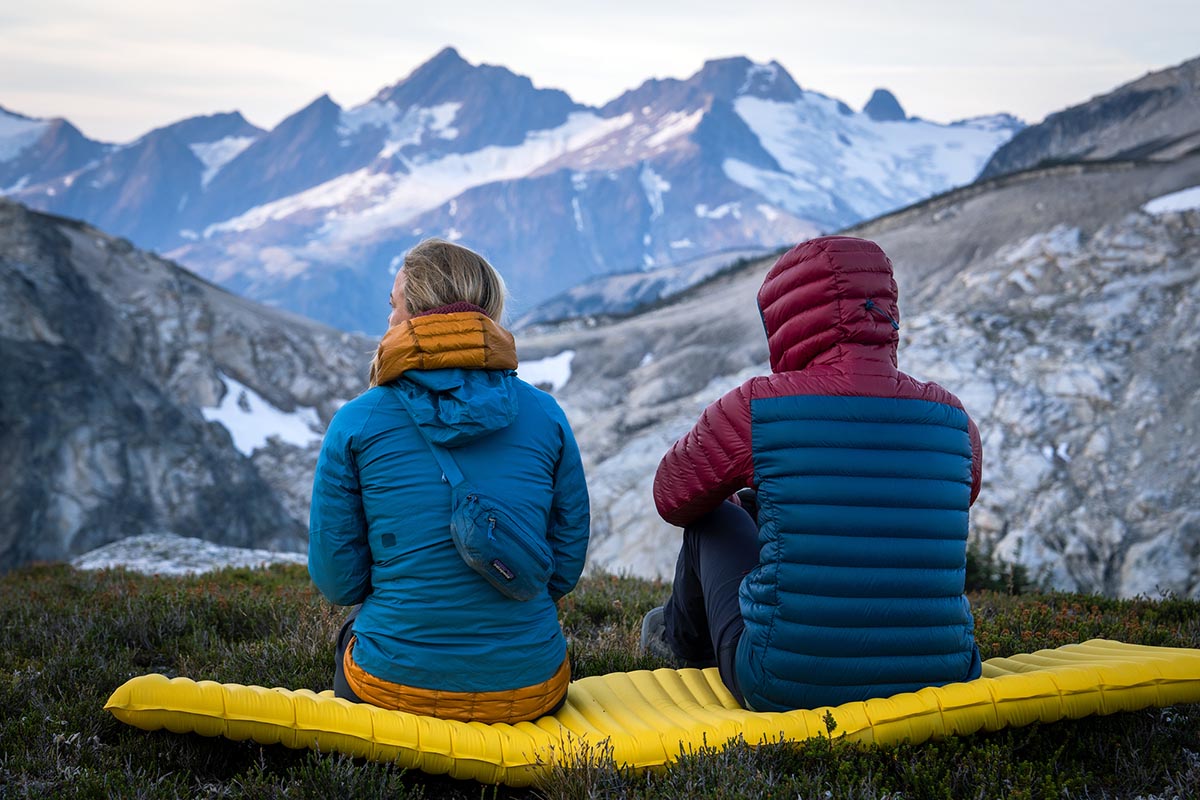
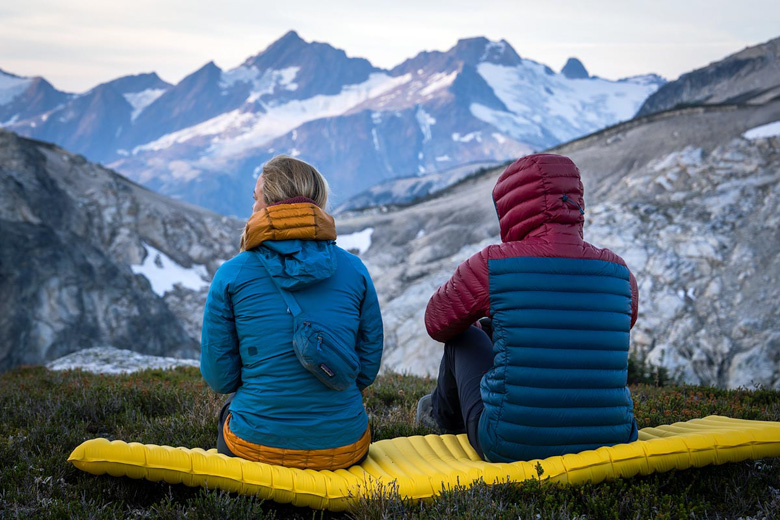
Few pieces of gear are as versatile and essential as a quality down jacket. Whether you're layering up for a chilly commute or bundling up while deep in the backcountry, down offers unmatched warmth for its weight and compresses small for easy stashing. Over the years, we've tested dozens of these cozy layers everywhere from the frosty peaks of the Himalayas to the soggy forests of the Pacific Northwest. After countless hours in the field, we’ve honed in on the best down jackets of 2025, ranging from lightweight down sweaters to minimalist ultralight layers and burly winter-ready puffies. For more background information, see our comparison tables and buying advice below the picks, along with details about our testing process. Note: This article includes models for both men and women, but our team has also written dedicated round-ups of the best women’s down jackets and best men's down jackets.
Editor's note: We updated this guide on April 14, 2025, to provide a more even selection of men's and women's designs, incorporate updated information and photos from testing, and ensure all prices, links, and colorways were current at the time of publishing.
 Category: Lightweight
Category: Lightweight
Weight: 13.0 oz. (men's), 10.3 oz. (women's)
Fill: 5.0 oz. (men's) / 3.5 oz. (women's) of 800-fill down
What we like: Extremely versatile, looks great, and warm for the weight.
What we don't: A bit heavy for technical backcountry use.
From backcountry layering to around-town warmth, few jackets are as versatile as the Patagonia Down Sweater. With 5 ounces of high-quality 800-fill down, it hits a sweet spot between performance and everyday use—light and compressible enough for backpacking and travel, yet warm enough to serve as a midlayer for resort skiing or chilly nights at camp. Patagonia also nails the style factor better than most, with a clean design and wide size range (XXS to 3XL) that works just as well on city streets as it does in the mountains. And when it comes to long-term durability, Patagonia continues to stand out—our testers consistently find their jackets last season after season with little sign of wear.
The latest version of the Down Sweater brings a few noteworthy changes: a NetPlus shell made from recycled fishing nets, added insulation for a boost in warmth (up from 3.4 to 5 oz.), and handy internal drop-in pockets for stashing gloves or snacks. We’re big fans of the improvements, although they come at a cost—this version runs about $50 more than the last. And while it weighs a respectable 13 ounces (10.3 oz. for the women's version), it’s not the lightest option out there for true ounce-counters. Lastly, the fit is a little more relaxed than some of the trim, technical pieces on our list, but that does make it more versatile for layering over a hoody or under a shell. All in all, the Down Sweater continues to be one of our favorite picks for folks who want one jacket that can do just about everything. If you're willing to spend up another $50 to add on a hood, we also really love the Down Sweater Hoody (women's version here).
Read more: Patagonia Down Sweater review (men's hooded version)
See the Men's Patagonia Down Sweater See the Women's Patagonia Down Sweater

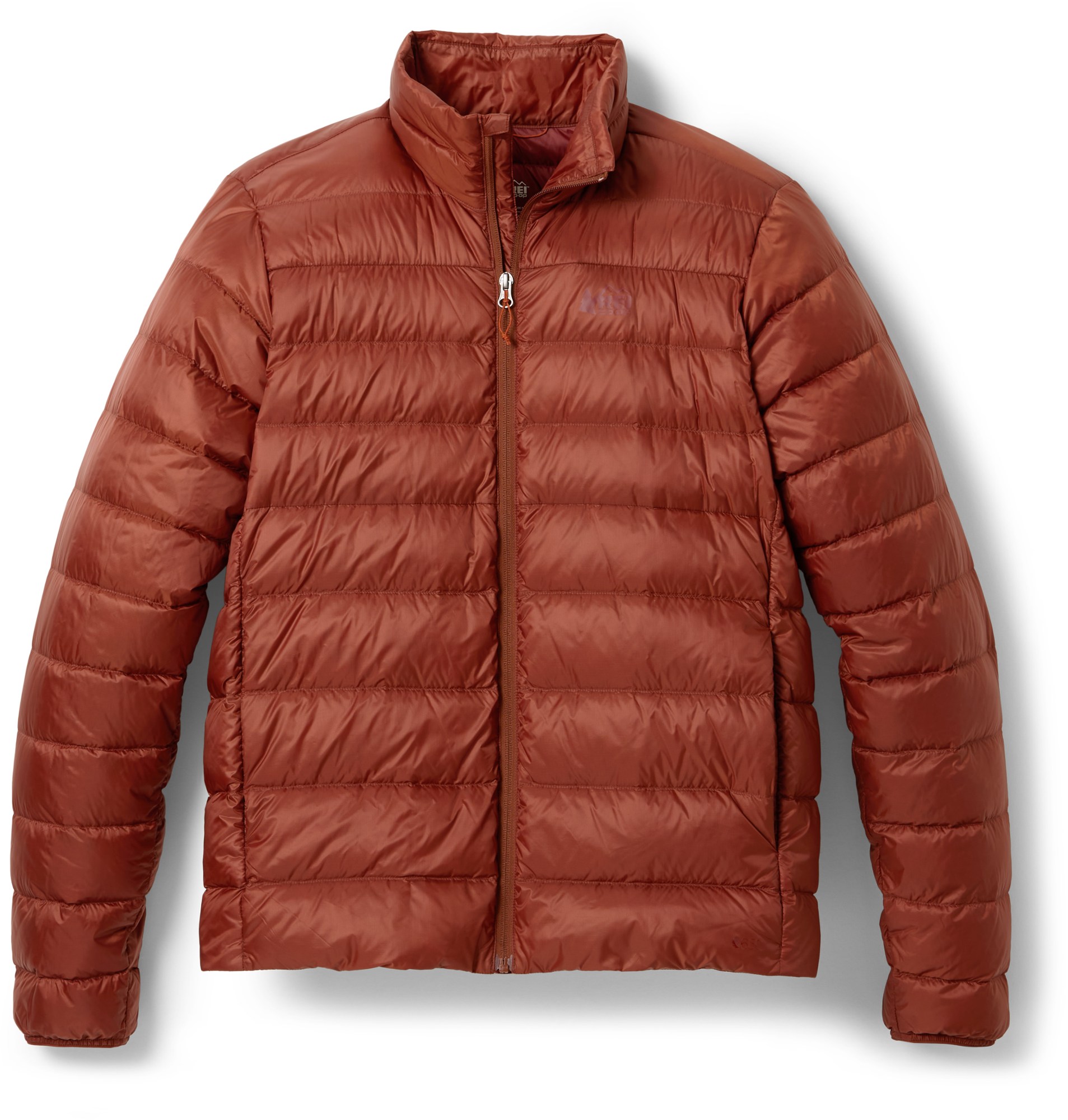 Category: Lightweight
Category: Lightweight
Weight: 10.9 oz. (men's), 10.2 oz. (women's)
Fill: 3.5 oz. (men's) / 3.3 oz. (women's) of 650-fill down
What we like: Fantastic price for a well-rounded, lightweight design.
What we don’t: Not particularly compressible and doesn’t come with an included stuff pocket or sack.
REI’s popular 650 Down Jacket has been a go-to budget pick of ours for years, and the latest version stays true to that winning formula. It’s lightweight (our men’s small weighed just 10.2 oz.), decently warm with 3.5 ounces of 650-fill-power down, and built with a windproof, water-resistant shell that holds its own in light weather. REI also refined the design with this update, adding a drawcord hem, swapping to a tougher ripstop nylon shell, and returning to classic horizontal baffles (the previous version had boxy ones). The price did jump by nearly 30 bucks, but with the improvements in quality, it’s still one of the best values out there—undercutting many competitors by $150 or more.
Of course, budget gear usually comes with trade-offs, and the REI 650 Down Jacket is no exception. The lower-fill down isn’t as lofty or packable as higher-end models like the Patagonia Down Sweater, and it no longer stuffs into its own pocket or comes with a stuff sack. The fit is also a bit boxier, which is great for layering over a sweater but less ideal under trim shells. That said, for casual wear, travel, resort days, and even the occasional overnight trip, this jacket delivers a ton of warmth and durability for the price. And we love REI’s commitment to inclusive sizing—the men’s jacket comes in 10 sizes, including Tall options, and the women’s version spans XS to 3X.
Read more: REI Co-op 650 Down Jacket review (men's version)
See the Men's REI 650 Down Jacket See the Women's REI 650 Down Jacket
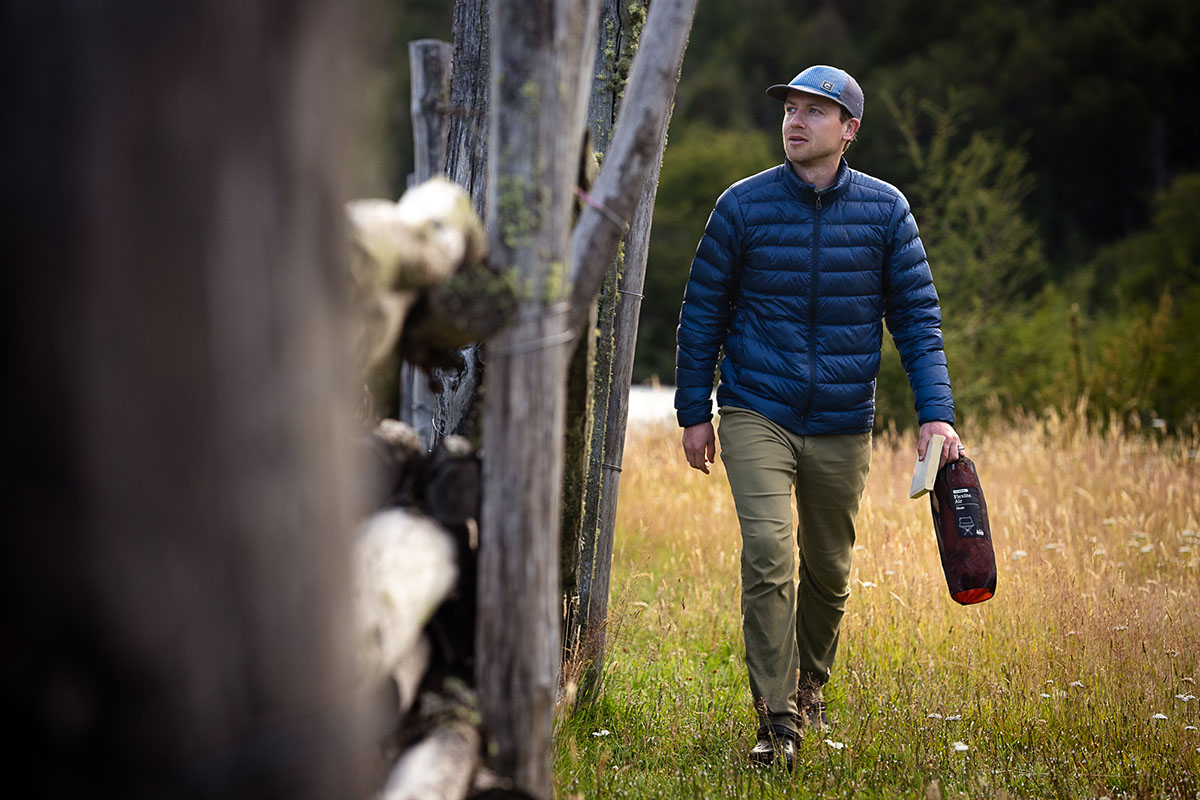
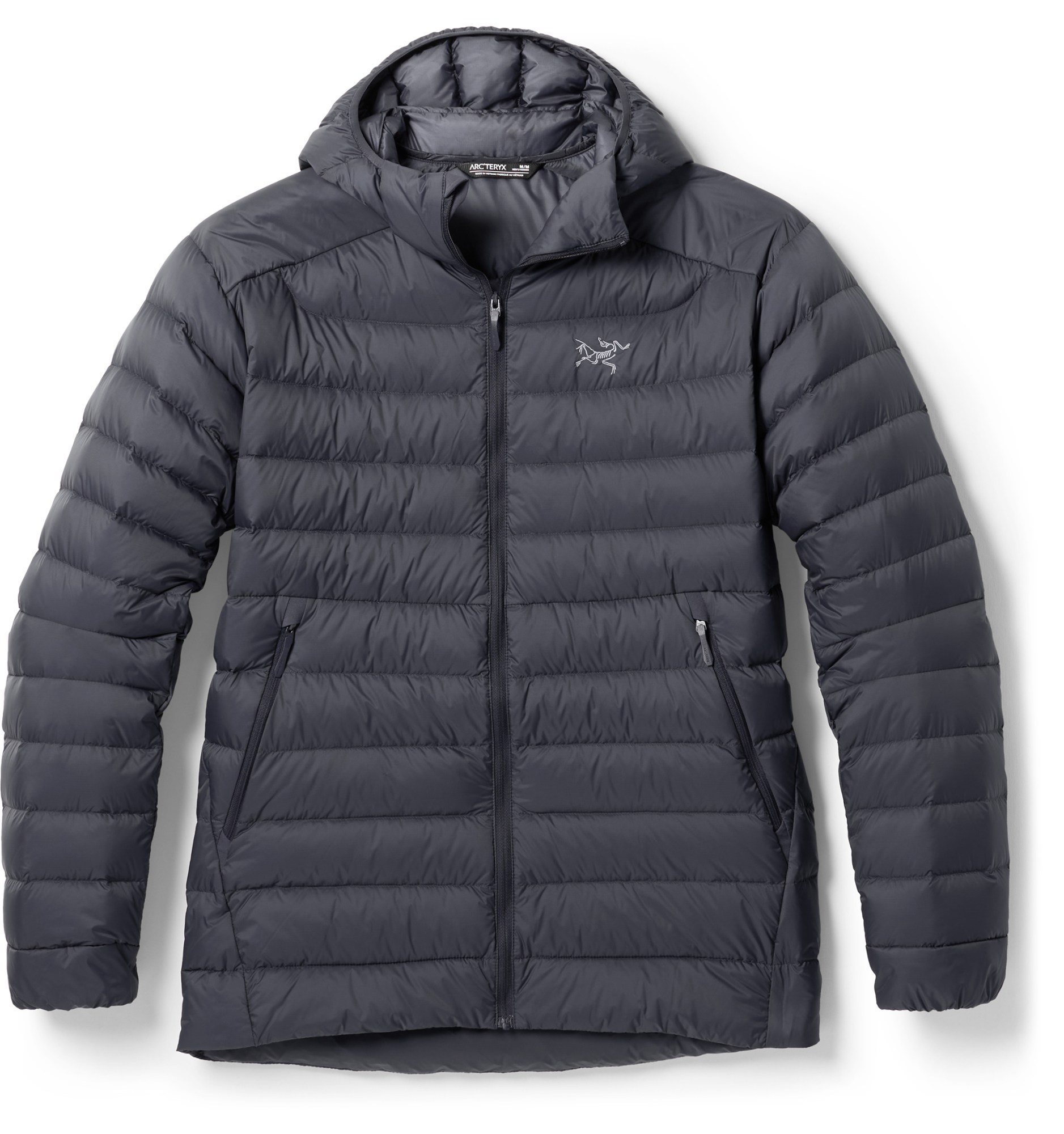 Category: Lightweight
Category: Lightweight
Weight: 11.9 oz. (men's), 10.2 oz. (women's)
Fill: 4.0 oz. of 850-fill down; 80g & 100g Coreloft
What we like: Serious performance chops; premium look and feel.
What we don’t: Expensive; not as light as the outgoing version.
Arc’teryx gear has quite the reputation: it’s expensive, undeniably sleek, and built for serious use—and the Cerium Hoody fits that mold to a T. Replacing the outgoing Cerium LT, this is the brand’s flagship lightweight down jacket, and it delivers in all the ways you’d expect. At just 11.9 ounces (10.2 oz. for the women's version), it’s impressively light yet still feature-rich, with a buttery-soft shell and liner, streamlined design, and Arc’teryx’s signature Down Composite Mapping, which places synthetic fill in moisture-prone zones to retain warmth when conditions turn wet. It’s one of the few jackets in this weight class that manages to look as good around town as it performs in the backcountry.
That premium polish does come with a steep price—$400 to be exact, which is $120 more than Patagonia’s Down Sweater. But Arc’teryx made some thoughtful updates with this latest version, including a slightly roomier fit through the torso, a more durable 15-denier shell, and more sustainable materials. The reverse-coil zipper with a TPU pull also adds to the jacket’s clean, refined aesthetic. All in all, if you're willing to spend up, the Cerium is a lightweight powerhouse that blends warmth, style, and performance better than just about anything else out there.
Read more: Arc'teryx Cerium Hoody review (men's version)
See the Men's Arc'teryx Cerium Hoody See the Women's Arc'teryx Cerium Hoody
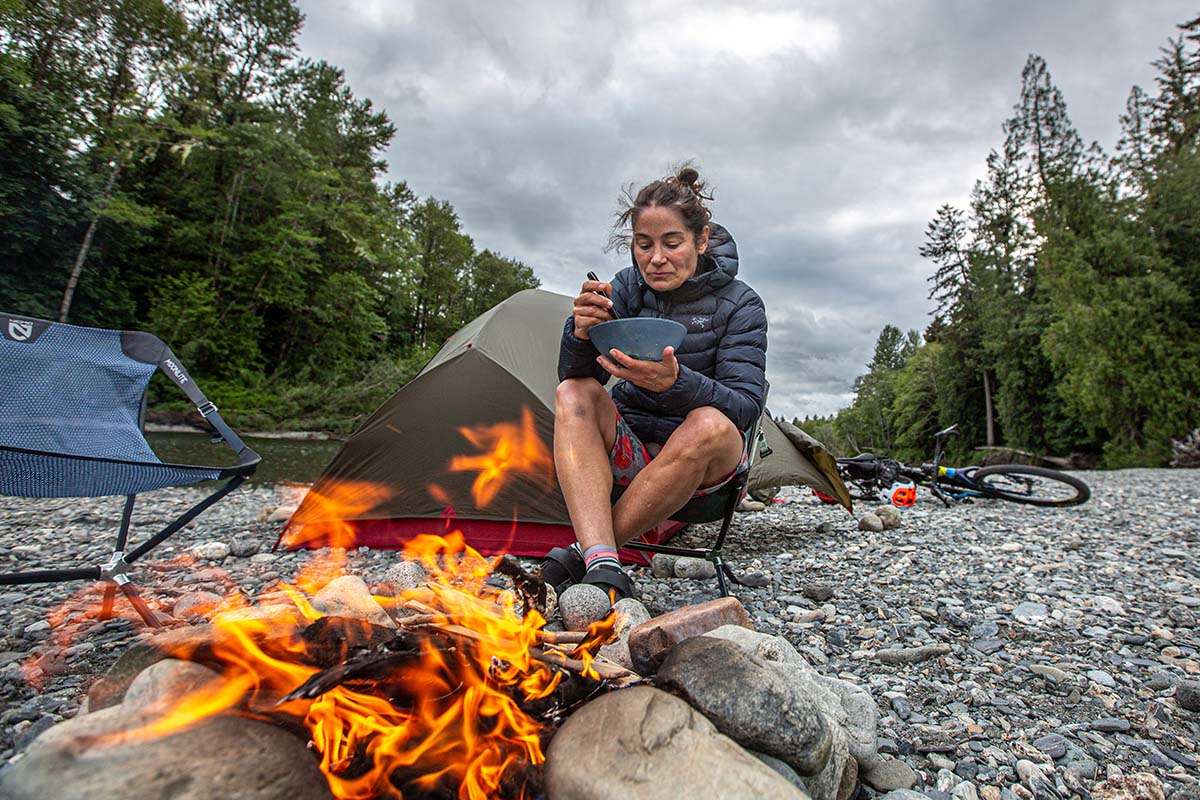
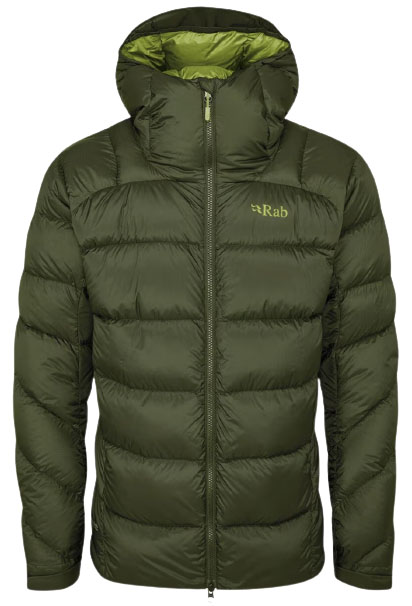 Category: Heavyweight
Category: Heavyweight
Weight: 1 lb. 5.3 oz. (men's), 1 lb. 2.7 oz. (women's)
Fill: 7.5 oz. (men's) / 7.0 oz. (women's) of 800-fill down
What we like: Tons of premium down at a reasonable price point.
What we don’t: Heavy and bulky; not versatile for year-round use.
When temps really dip, and you need serious insulation—whether for winter camping, belaying on an icy wall, or tossing on during ski transitions—a heavyweight down jacket is hard to beat. These lofty puffies are built for warmth above all, with generous cuts, burly collars, and sleeping bag-like puff that seals in heat. You’ll also get beefed-up shells for wind and water resistance and handy features like large internal dump pockets for stashing skins or warming up gear. And in our book, the Rab Neutrino Pro stands out as the best of the bunch. This has been our steed of choice for countless cold-weather adventures, including multiple late-fall ascents of El Cap in Yosemite National Park.
What really sets the Neutrino Pro apart is its Pertex Quantum Pro shell—it’s impressively tough and weather-resistant for how lightweight it feels, making this jacket a great match for icy belays or cold alpine transitions. The 800-fill-power down (7.5 oz. in a men’s medium, 7.0 oz. for the women's) provides outstanding warmth—nearly double what you get from most lightweight puffies—at a still-reasonable $400 price. One of our editors has relied on the Neutrino for big-wall climbs in Yosemite, where it’s proven its worth in whipping wind and on freezing ledges. It’s definitely not light or packable enough for summer missions, but if max warmth is the goal, the Neutrino Pro is a reliable, cold-crushing powerhouse.
Read more: Rab Neutrino Pro review (men's version)
See the Men's Rab Neutrino Pro See the Women's Rab Neutrino Pro
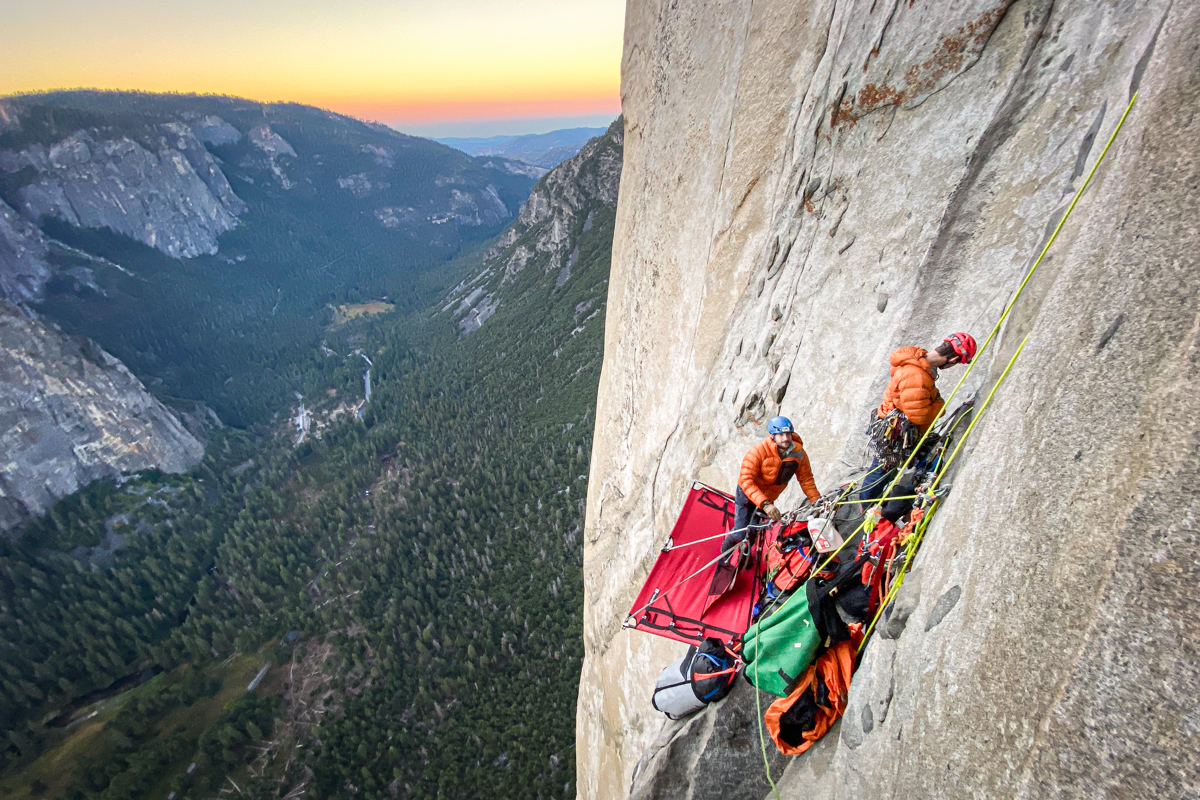
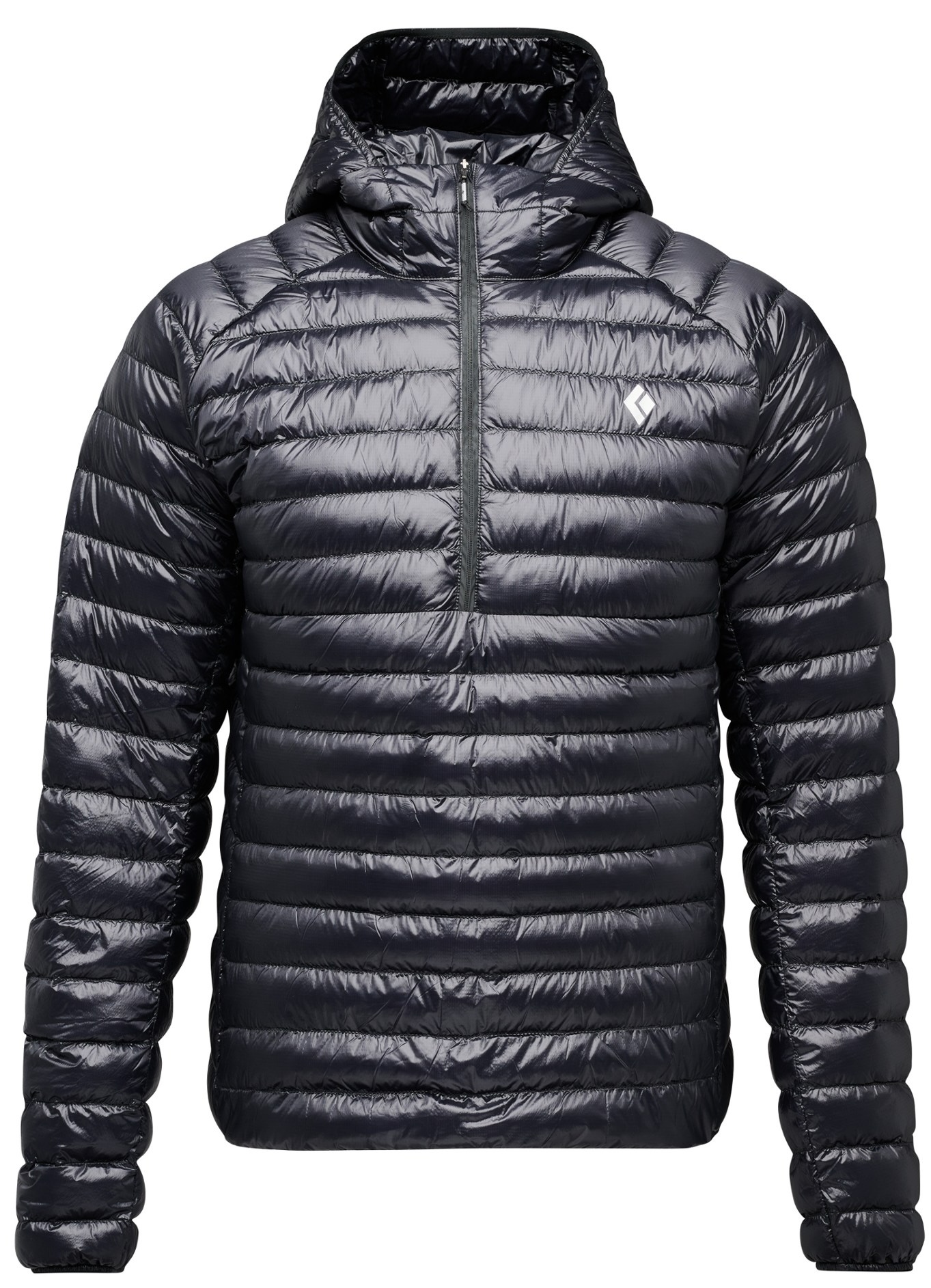 Category: Ultralight
Category: Ultralight
Weight: 5.2 oz.
Fill: 1000-fill down
What we like: Absurdly ultralight and packable, with just enough features for the outdoor athlete.
What we don’t: Very fragile, no pockets, boxy fit, extremely pricey.
Black Diamond isn’t quite exaggerating when they call the Deploy Down Jacket “the lightest down jacket in the world”—at just 5.3 ounces, it practically disappears in your pack (and, aside from the 4.9-ounce Montbell Plasma, we don't know of a lighter option out there). We were skeptical at first (it feels more like a prop than a piece of gear when you unbox it), but after putting it through its paces on shoulder-season rock climbs, ultralight treks through Wyoming’s Wind River Range, and snowy day hikes, we’ve been thoroughly impressed. The Deploy is incredibly compact and trimmed down to the essentials, but still offers just enough warmth for active missions in mild conditions. And compared to our previous ultralight favorite for men, the Mountain Hardwear Ghost Whisperer, the Deploy weighs in at half the weight without sacrificing much in terms of functionality.
Of course, all that weight savings comes at a cost. To hit that ultralight mark, Black Diamond had to make some big trade-offs in durability, comfort, and features. The nearly translucent 4-denier shell fabric is incredibly thin and prone to tearing—we picked up a few snags just from brushing against granite and tree branches. There’s also no hem adjustment to seal out drafts, no handwarmer pockets (a real bummer on chilly belays), and the half-zip pullover design can be tricky to get on over bulkier midlayers. Plus, at $499, you’re dropping a premium on a jacket that’s intentionally minimalist and not particularly versatile. That said, for ounce-counters heading into the alpine or tackling long routes with unpredictable conditions, the Deploy is a brilliantly executed tool. It’s not your everyday insulator, but for fast-and-light mountain missions, it earns a spot in the pack.
See the Men's Black Diamond Deploy Down 0.5 Pullover Hoody
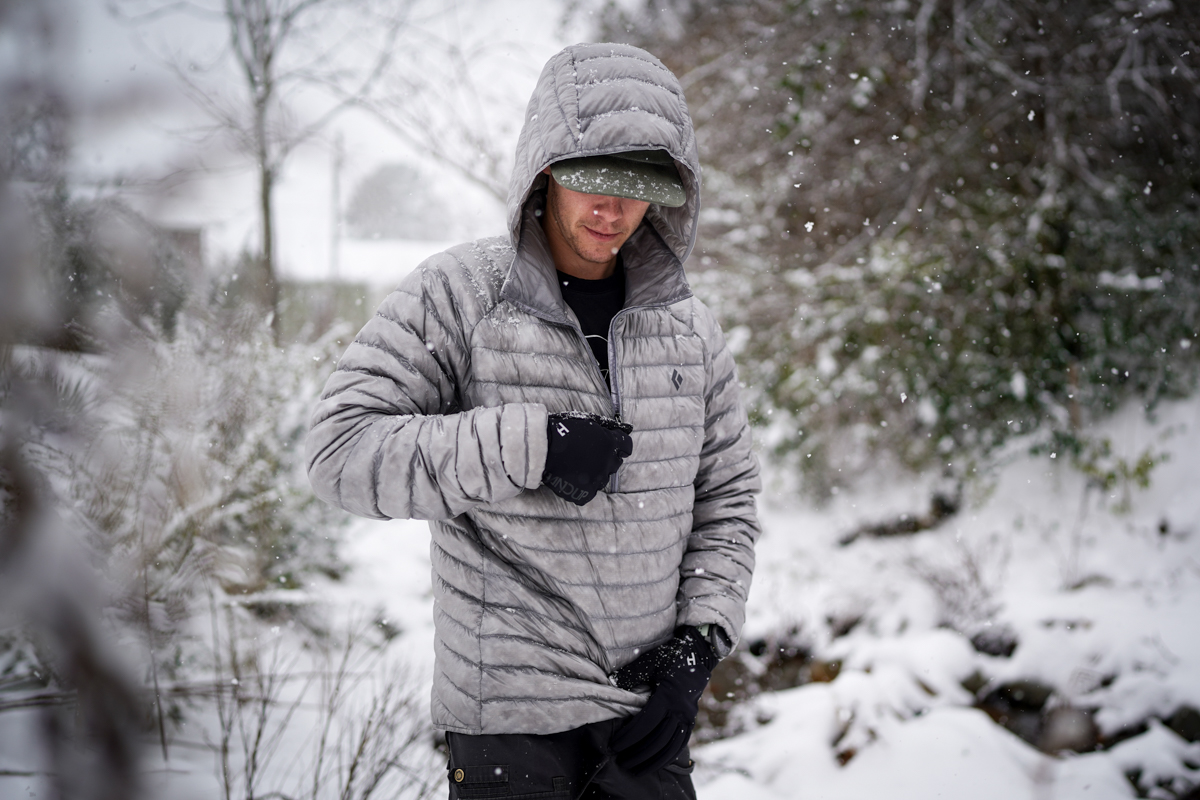
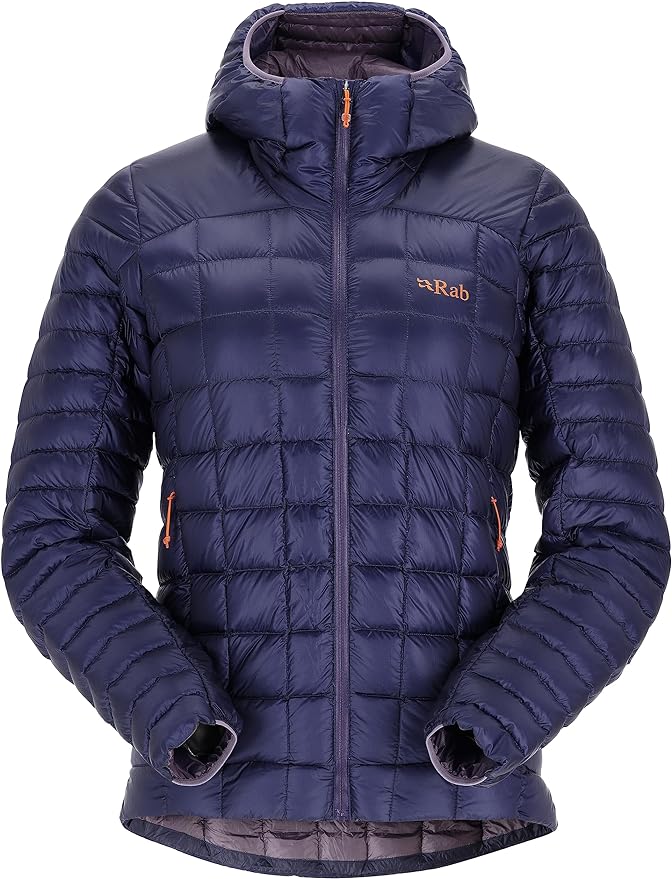 Category: Ultralight
Category: Ultralight
Weight: 8.0 oz.
Fill: 2.1 oz. of 900-fill down & PrimaLoft Gold
What we like: Great price for a very premium ultralight jacket.
What we don’t: Thin shell is too fragile for everyday use.
Rab’s Mythic Alpine Light might be a newer addition to our lineup, but it’s already secured its spot as our favorite ultralight down jacket for women—edging out long-standing contenders like the Mountain Hardwear Ghost Whisperer. We’ve been blown away by its performance: It’s impressively lightweight at just 8 ounces, packs serious warmth with 900-fill-power down and PrimaLoft Gold insulation, and uses a tough and weather-resistant Pertex Quantum shell. On top of that, it looks good, with sleek boxed baffles, premium materials, and a flattering cut that adds just a bit more coverage at the hem.
If you’re eyeing the Arc’teryx Cerium Hoody above, the Mythic Alpine Light is a worthy alternative. It’s lighter by a couple ounces, uses higher-fill down (900 vs. 850), and saves you $70—no small feat. On the flip side, the Cerium’s thicker 15D shell and slightly beefier build do give it a bit more durability and warmth, and the Rab’s longer cut can hang below your shell jacket depending on the pairing. But if you're after a trim, ultralight insulator for shoulder-season missions or as a backcountry midlayer, the Mythic Alpine Light punches well above its weight. And if you need even more warmth, Rab also offers the standard Mythic Alpine with double the down (read our full, in-depth review of the men's Mythic Alpine here), or the high-end Mythic G—an ultra-premium piece stuffed with 1,000-fill down for serious alpine pursuits.
See the Women's Rab Mythic Alpine Light Down Jacket
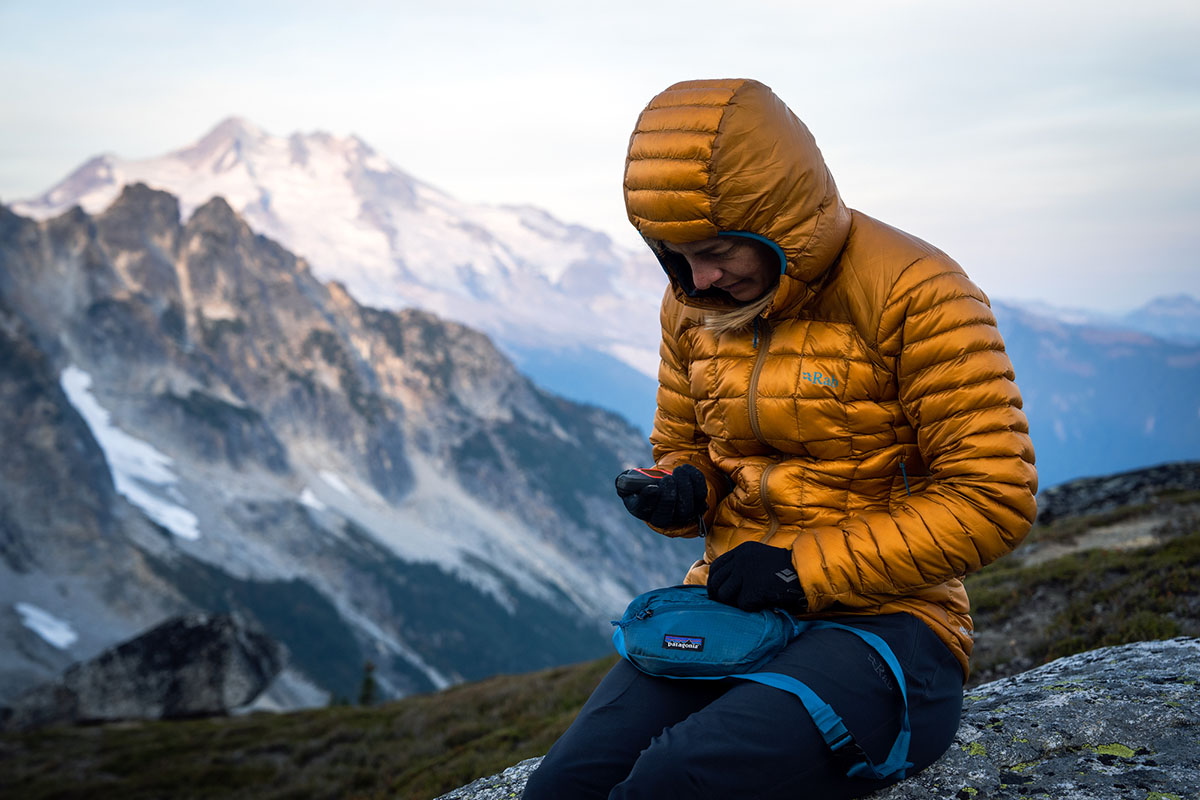
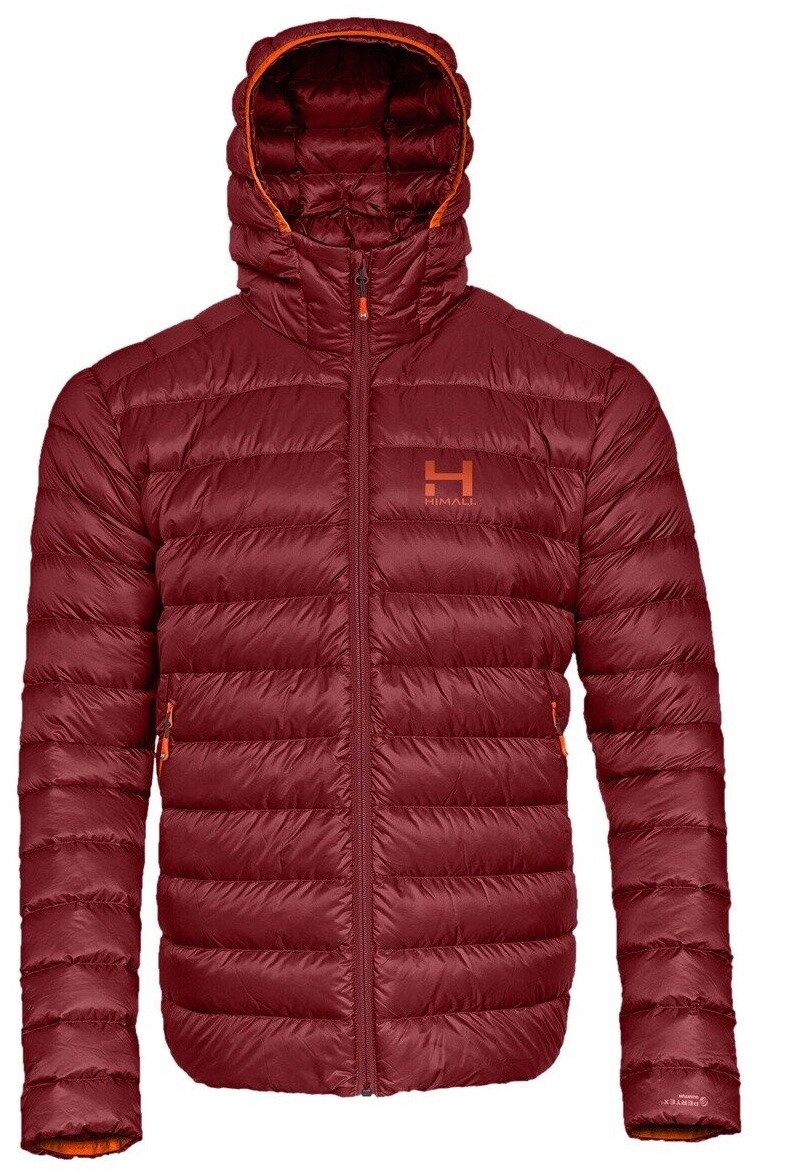 Category: Lightweight
Category: Lightweight
Weight: 12.2 oz.
Fill: 4.0 oz. of 850-fill down
What we like: A competitive alternative to the Cerium above for $70 less, stellar fit and style.
What we don’t: Relatively delicate shell fabric; attached stuff sack gets in the way.
Himali first caught our attention while planning a climbing expedition to Nepal, and the brand’s roots run deep in the region—with strong ties to the Sherpa community and a growing focus on sustainable manufacturing. Their story is compelling, but what really impressed us was how their gear performed in the field. We took a range of Himali pieces, including the Accelerator Down Jacket, into the heart of the Himalayas and came away seriously impressed. This jacket, in particular, quickly earned a top spot in our kit thanks to its dialed-in athletic fit, streamlined look, and no-fuss functionality that worked equally well both in alpine terrain and around town.
Sitting solidly in the lightweight category, the Accelerator offers standout warmth for its weight, a clean silhouette that layers well, and a great price considering its performance. It mirrors the hybrid insulation layout found in higher-end jackets like the Arc’teryx Cerium—using synthetic fill in moisture-prone zones—which boosts its versatility for cold, fast-moving days in the mountains. That said, the thin face fabric showed some wear after a few rugged missions, and the integrated stuff sack inside the pocket felt more like an annoyance than a convenience. Still, for a jacket that looks great, moves with you, and competes with top-tier designs at a lower price, the Accelerator Down Jacket is a home run—and an exciting sign of what’s to come from Himali. And our female editor's have also really enjoyed the women's Accelerator Down, even though we didn't feature it for an award in this unisex review.
See the Men's Himali Accelerator
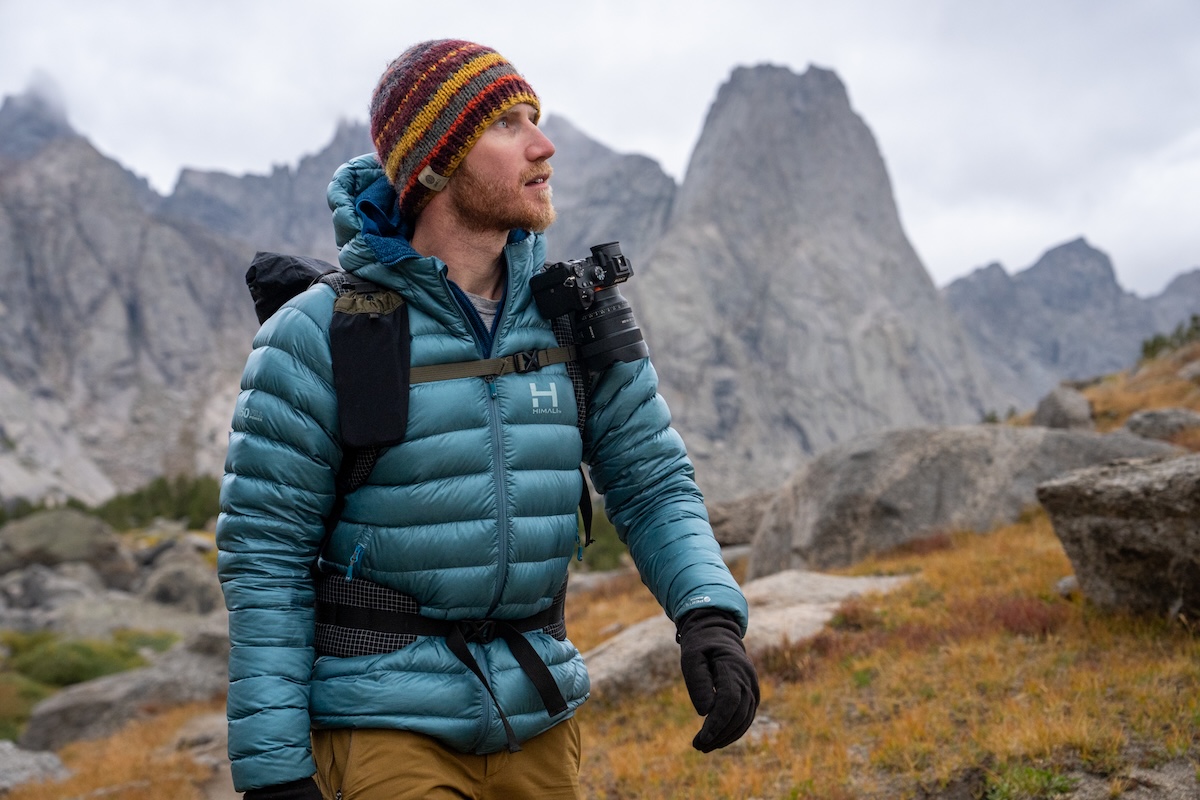
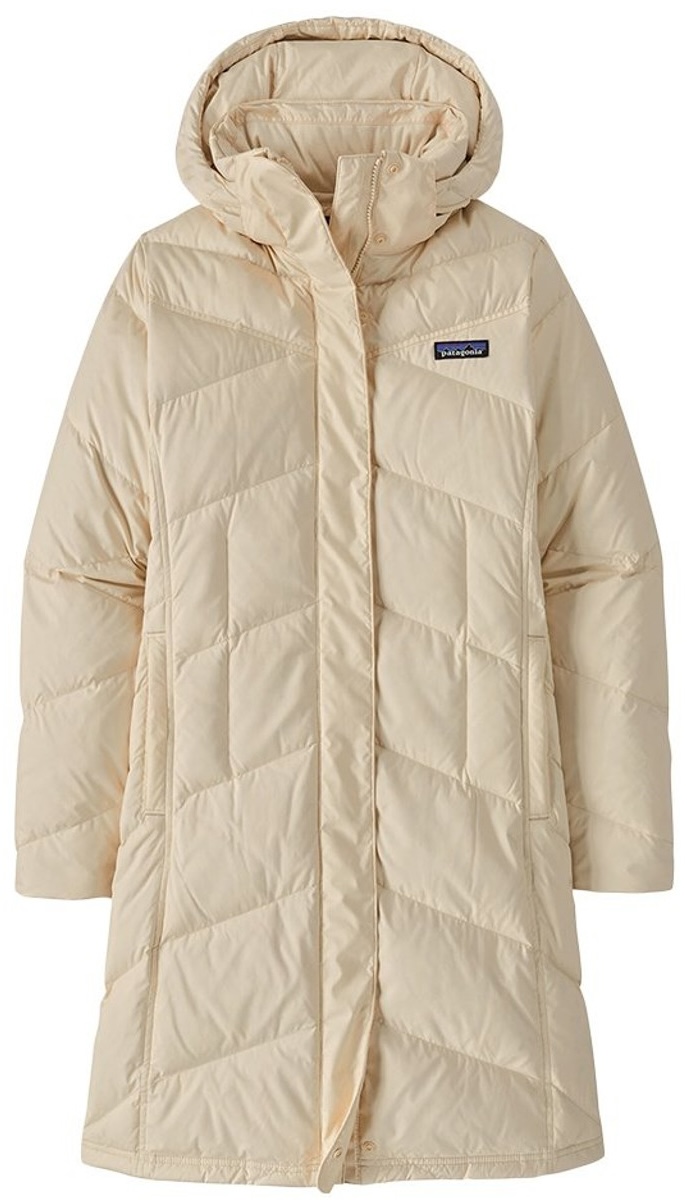 Category: Midweight
Category: Midweight
Weight: 2 lb. 5.0 oz.
Fill: 8.3 oz. of 600-fill down
What we like: Great styling and a major boost in warmth over shorter down jackets.
What we don’t: Not everyone will like the length and subsequent bulky packed size.
While high-fill down often gets the spotlight for alpine pursuits, it also shines in everyday wear, offering unbeatable coziness and a great warmth-to-weight ratio for city life. For women seeking a blend of performance and polish, Patagonia’s Down With It Parka is our top pick. It’s packed with 8.3 ounces of 600-fill down for reliable insulation, treated with a PFAS-free DWR coating to shed light moisture, and lined with soft fleece in the collar and hand pockets for added comfort. Style-wise, it’s a standout too: Chevron baffles, princess seams, a detachable hood, and clever side snaps (a lifesaver when sitting down) give it a tailored yet practical edge that many parkas lack.
The main thing that sets the Down With It apart from other jackets on this list is its length. At 35 inches down the back, it provides true knee-length coverage—perfect for blustery winters in places like Chicago or Boston, though it might feel a bit bulky for more mild conditions or locations. That added coverage makes a big difference in truly frigid temps, even if the jacket doesn’t pack down particularly well. And while 600-fill down doesn’t have the lofty compressibility of higher-end insulations, the hefty 8.3-ounce fill weight translates to serious warmth. For those who prefer something shorter and easier to stash in a bag, the hip-length version trims both the coverage and cost while still offering a generous 7.1 ounces of down. Either way, this is a winter-ready parka that doesn’t ask you to choose between warmth and everyday style.
Read More: Patagonia Down With It Parka women's review
See the Women's Patagonia Down With It Parka
.jpg)
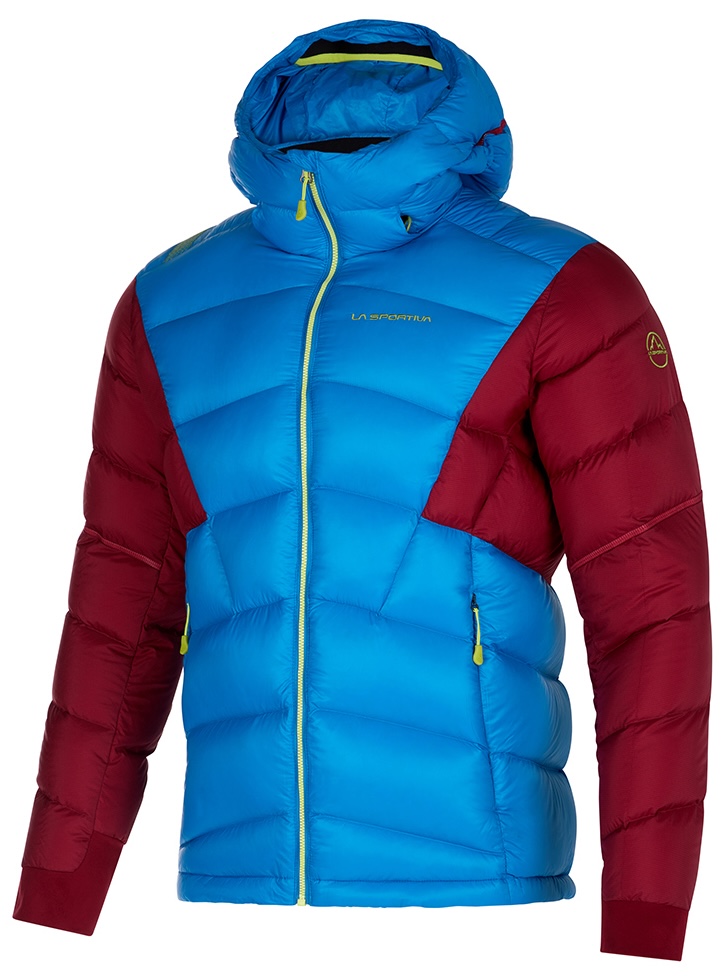 Category: Midweight
Category: Midweight
Weight: 15.5 oz.
Fill: 5.3 oz. of 1,000-fill down
What we like: Incredible warmth-to-weight ratio, highly compressible, top-notch performance for high-altitude pursuits.
What we don’t: Expensive, decidedly technical, and slim fit limits layering ability.
La Sportiva jackets have steadily been creeping into our gear rotation for technical missions—and it’s not hard to see why. Their outerwear blends excellent fit, long-term durability, and a unique mountain-ready aesthetic. The Supercouloir 1000 carries that torch confidently. Stuffed with ultra-premium 1,000-fill-power goose down (a rarity even among high-end alpine gear) and wrapped in a burly, weather-resistant Pertex Quantum shell, it delivers an impressive mix of warmth, protection, and packability—all at just 15.5 ounces. Built specifically for alpine climbing and ice ascents, the Supercouloir has earned its place as a go-to for staff tackling cold, high-consequence terrain where every ounce counts.
We recently put the Supercouloir through the wringer on a mountaineering expedition in Nepal, including a summit push on the 20,000-foot Island Peak—and it performed beautifully. Sub-zero temps, harsh granite, and wind-scoured ridgelines were no match for this burly puffer. We appreciated the jacket’s well-ventilated pits and streamlined fit, which gave us plenty of mobility without feeling bulky, and it stuffed away surprisingly well in a pack when the sun hit. That said, it’s not the most forgiving piece: The slim sleeves made it tricky to layer underneath, and the oversized, helmet-compatible hood could block peripheral vision if not adjusted just right. It’s also a purpose-built technical layer through and through—less versatile for casual use and undeniably pricey at $449. But for alpinists and ice climbers chasing big objectives in frigid temps, the Supercouloir is one of the most dialed-in insulators we’ve tested. Note: Availability has been limited lately, though La Sportiva tells us more are on the way.
See the Men's La Sportiva Supercouloir 1000
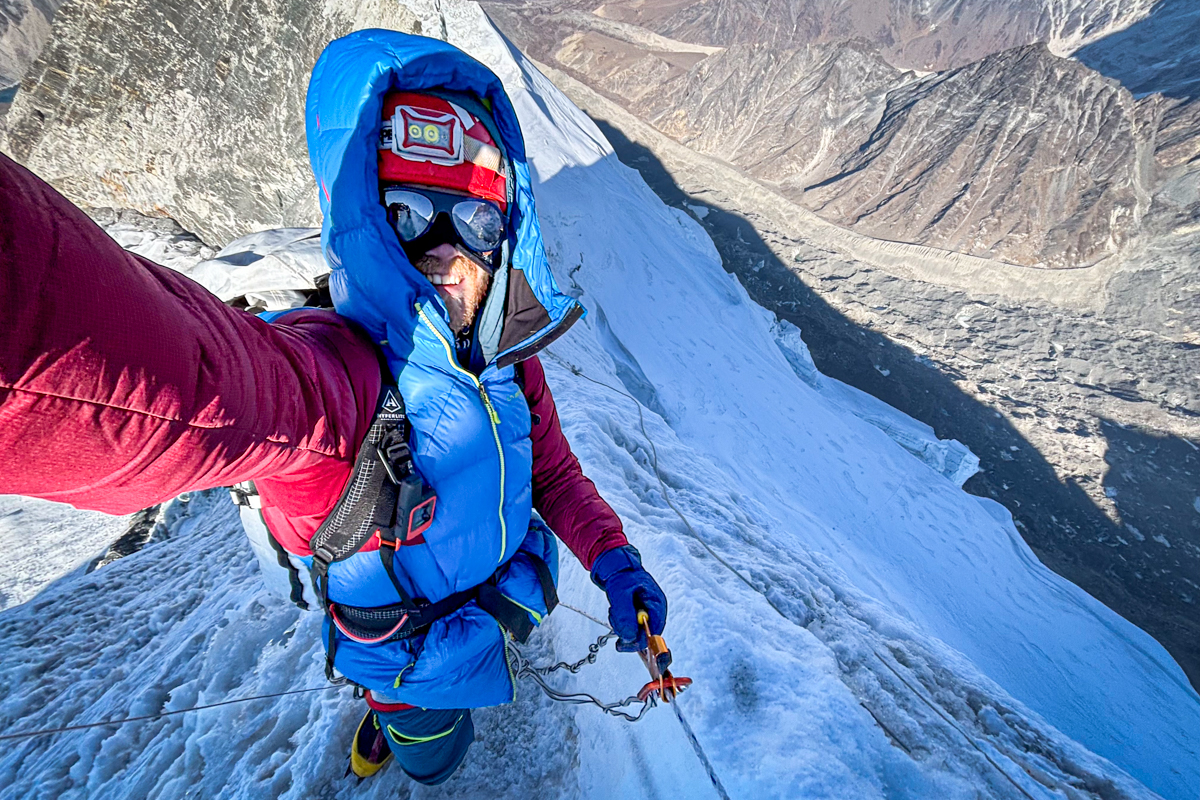
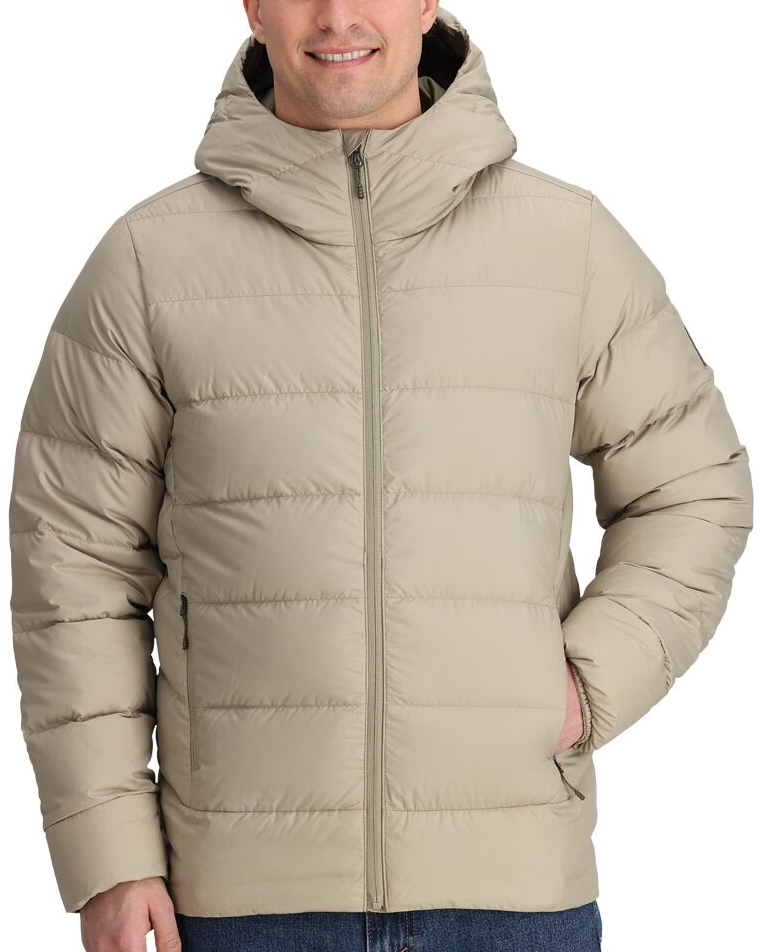 Category: Midweight
Category: Midweight
Weight: 1 lb. 4.7 oz. (men's), 1 lb. 5.2 oz. (women's)
Fill: 6.7 oz. (men's) / 5.6 oz. (women's) of 700-fill down & 150g VerticalX Eco
What we like: Comfy, classy, and well-priced for what you get.
What we don’t: Doesn’t pack down nearly as small as more premium options.
Outdoor Research jackets might not be the most premium or technically advanced options on the market, but they consistently hit a sweet spot for price and performance. The Coldfront Down Hoodie is a standout example: At just $279, it undercuts many high-end alternatives while still delivering impressive warmth and weather protection. With 6.7 ounces of 700-fill down paired with VerticalX Eco synthetic insulation in moisture-prone areas like the shoulders and cuffs, the Coldfront holds its own in chilly, wet conditions. We’re also big fans of the soft yet tough shell fabric, cozy fleece-lined hand pockets, and thoughtful extras like snug cuff gaiters with thumb loops and clean branding on the sleeve. For daily wear or casual winter outings, this is a dependable and well-rounded option that doesn’t break the bank.
That said, there are some clear trade-offs at this price point. With mid-range down fill, a beefy dose of synthetic insulation, and a burly 30-denier shell, the Coldfront isn’t particularly lightweight or compact. At 1 pound 4.7 ounces (1 lb. 5.2 oz. for the slighter longer women's version), it’s more than four times heavier than true ultralight pieces like the Black Diamond Deploy above. Outdoor Research does offer a trimmed-down version in their Coldfront LT Down Hoodie ($249), which uses thinner baffles and less down (4.9 oz. for the men's) to shave weight—but even that model tips the scales at over a pound and still lags behind more minimalist options. All in all, the Coldfront collection is better suited for everyday wear and shoulder-season hikes than fast-and-light backcountry missions. But if you’re after warmth, comfort, and durability at a solid price, this is one of the best values around.
See the Men's Outdoor Research Coldfront See the Women's Outdoor Research Coldfront
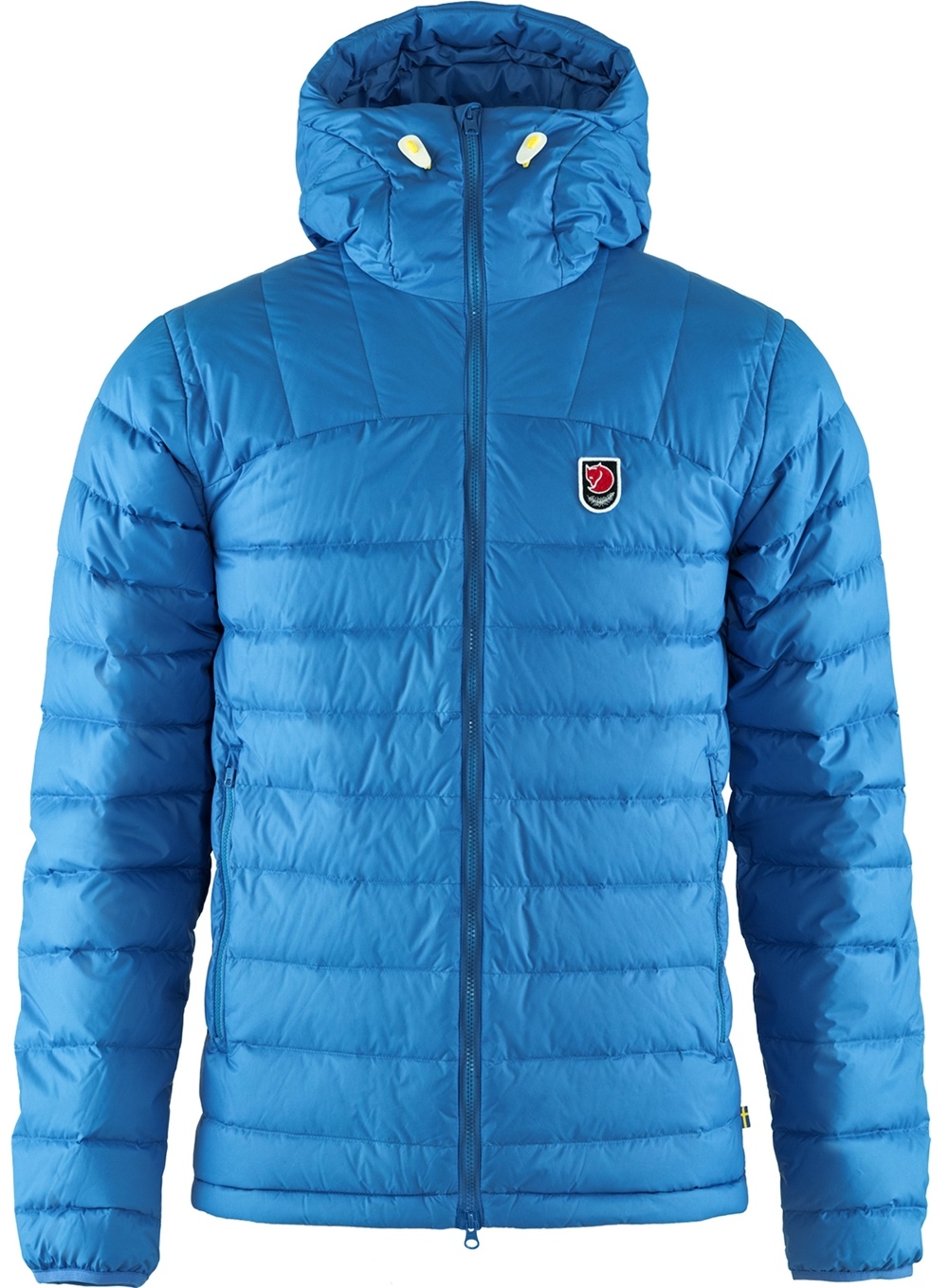 Category: Light/midweight
Category: Light/midweight
Weight: 1 lb. 1.3 oz. (men's), 15.3 oz. (women's)
Fill: 3.9 oz. (men's) / 3.5 oz. (women's) of 700-fill down & synthetic
What we like: High-end look and feel; athletic fit.
What we don’t: Heavier than the lightweight competition.
Swedish brand Fjallraven has carved out a niche by blending heritage aesthetics with mountain-ready performance, and their Expedition Pack Down Jacket is a great example of this philosophy in action. While you don’t get ultra-premium down fill like the 800-fill and up that brands like Arc’teryx and Patagonia pack into their jackets, the Fjallraven still holds its own as a warm, stylish, and well-built piece. You get a generous helping of 700-fill down, with synthetic insulation at the shoulders for added durability and moisture resistance, a fantastic hood that seals out wind, and an athletic cut that feels less boxy than many of its competitors. For casual winter outings, travel, and light day hikes, it’s a quality pick that looks and feels the part.
Compared to performance-focused pieces like the Arc’teryx Cerium or Patagonia Down Sweater above, the Expedition Pack Down isn’t as light or compressible, which makes it less ideal for weight-conscious objectives or long backcountry trips. But what it lacks in ounce-shaving prowess, it makes up for in everyday practicality and style. We’ve found the synthetic reinforcement in the shoulders especially useful when wearing a pack for extended stretches—great for winter hikes, urban commuting, or snowshoeing treks. And true to Fjallraven form, the attention to detail is top-notch, from the cozy lining and quality materials to the clean Scandinavian design. If you’re looking for a slightly more streamlined piece to wear under a shell or layer in milder weather, Fjallraven also offers a non-hooded version for $265.
Read more: Fjallraven Expedition Pack Down Hoodie review (men's version)
See the Men's Fjallraven Expedition Pack See the Women's Fjallraven Expedition Pack
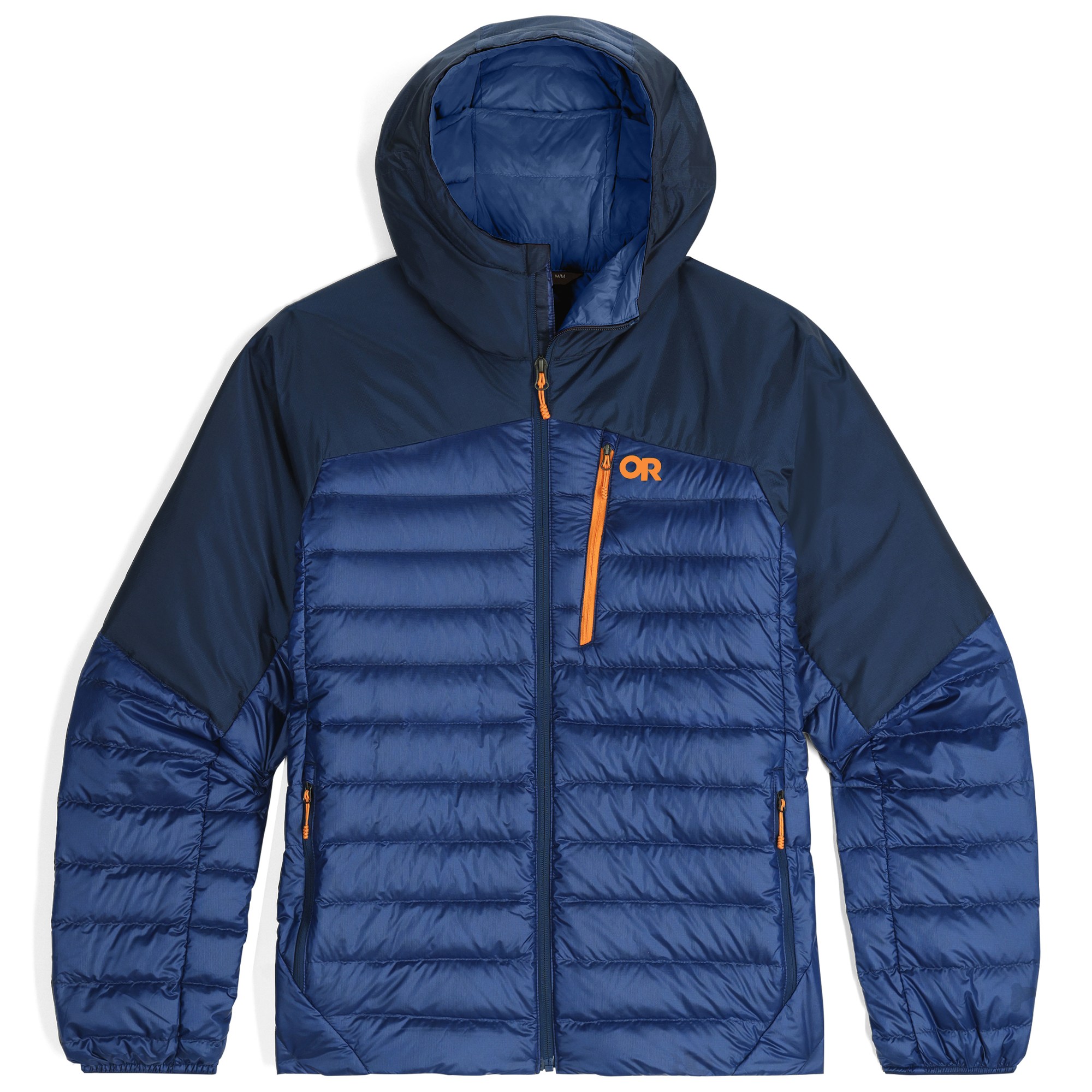 Category: Lightweight
Category: Lightweight
Weight: 1 lb. 0.2 oz. (men's), 15.4 oz. (women's)
Fill: 3.9 oz. of 800-fill down
What we like: Waterproof fabric on the hood and shoulders; highly abrasion-resistant.
What we don’t: Shell is fairly crinkly; heavy for a performance-oriented jacket.
For all their inherent strengths, down jackets aren’t perfect: Namely, they perform poorly in wet weather, and their thin fabrics are often lacking in durability. But with the Helium Down Hoodie, Outdoor Research addresses both of these concerns in one fell swoop. The Helium uses Pertex’s Diamond Fuse technology throughout the shell, which improves abrasion resistance without adding weight. On top of that, you get waterproof Pertex Shield—the same fabric used in OR’s popular Helium UL Rain Jacket—on the hood and shoulders for protection from rain and melting snow. The result is a sub-1-pound down jacket that is both impressively durable and relatively capable in wet weather.
But while the Helium Down’s partially waterproof shell is a nice touch, you won’t find us relying on it for much more than light rain or snow. In terms of the competition, the Cerium Hoody above is significantly lighter, and the use of synthetic Coreloft in the hood and shoulders (which insulates even when wet) lends similar wet-weather assurance. In addition, we’ve found the crinkly Diamond Fuse shell makes the OR jacket a little less cozy than an alternative like the Cerium, and the jacket is known to run small for its size. Nitpicks aside, the Helium’s solid weatherproofing and durability make it an intriguing standalone piece, earning it a spot on our list.
See the Men's Outdoor Research Helium Down See the Women's Outdoor Research Helium Down
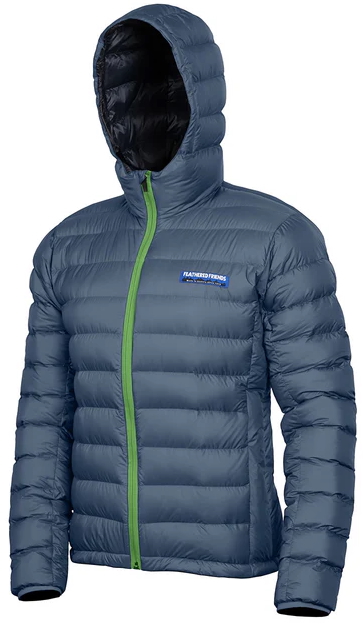 Category: Lightweight
Category: Lightweight
Weight: 11.8 oz. (men's), 11.1 oz. (women's)
Fill: 4.0 oz. (men's) / 3.7 oz. (women's) of 900-fill down
What we like: Superb build quality and warmth-to-weight ratio.
What we don’t: Expensive; unflattering fit; update adds an ounce.
Feathered Friends might not be a household name outside of hardcore alpine circles, but among seasoned mountaineers and gear nerds, they’re practically royalty. You won’t find splashy ad campaigns or influencer collabs here—just top-notch construction, responsibly sourced materials, and a hyper-focus on performance. Their jackets are built in small batches in Seattle and Vancouver and sold directly to consumers, which helps keep costs relatively competitive despite the premium build. The Eos is their most approachable offering, striking a sweet balance between weight, warmth, and packability. With a whopping 4 ounces of ultra-premium 900-fill down packed into an 11.8-ounce shell, it boasts one of the best warmth-to-weight ratios in this entire guide.
So why isn’t it ranked higher? Well, while the Eos is an absolute performer in the mountains, it’s not exactly a looker. The fit is boxy and utilitarian, which makes it less appealing for daily wear compared to sleeker offerings like the Arc’teryx Cerium or Patagonia Down Sweater. It’s also on the pricier side at $409—landing it in the same ballpark as burlier, expedition-ready pieces like the Rab Neutrino Pro—and it doesn’t come with the benefit of widespread availability. Unless you’re in Seattle and can swing by their shop (just across the street from REI’s flagship), you’re buying sight unseen. But if warmth-to-weight is your top priority and you want a jacket that delivers true alpine-grade performance, the Eos is hard to beat.
Read more: Feathered Friends Eos review (women's version)
See the Men's Feathered Friends Eos See the Women's Feathered Friends Eos
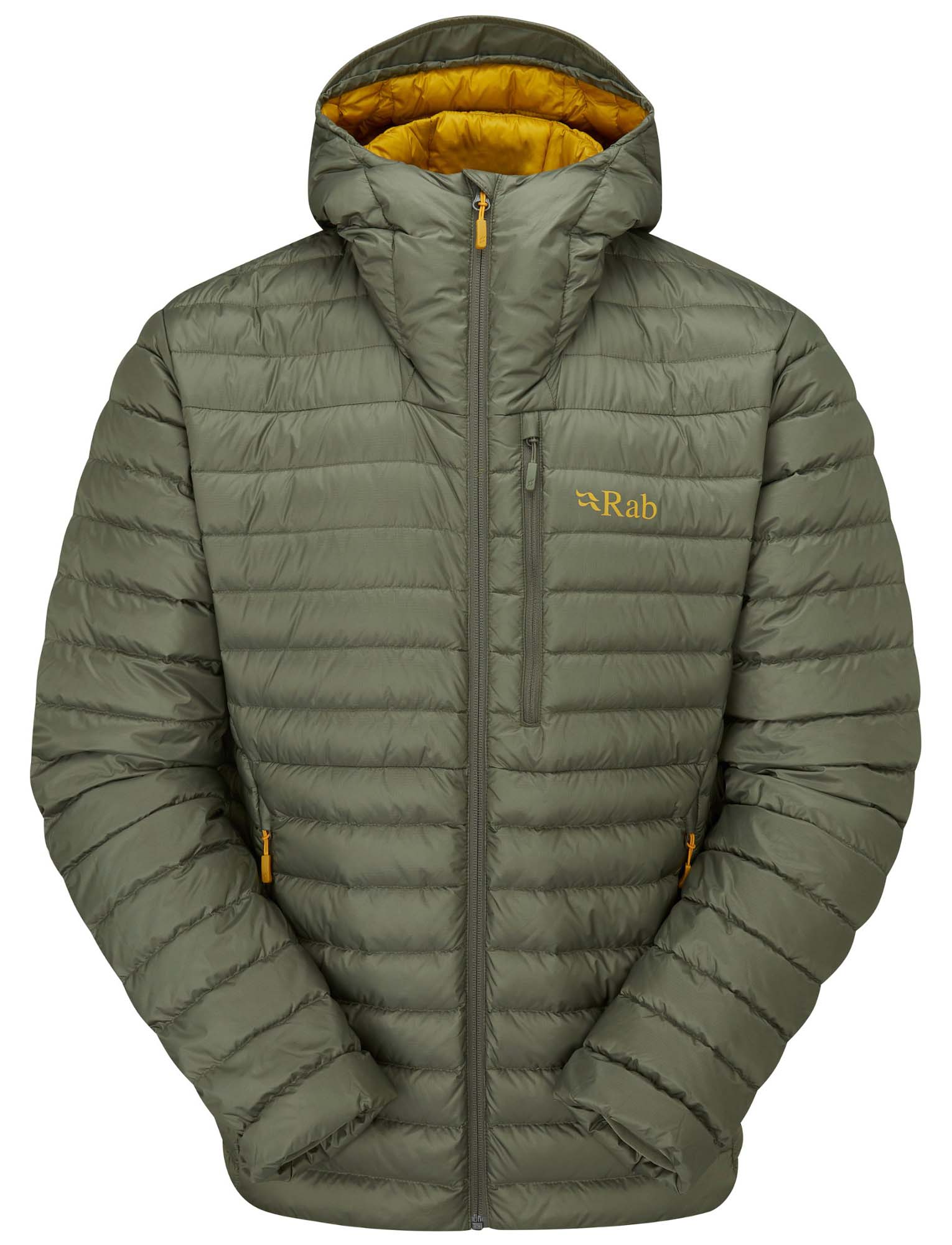 Category: Light/midweight
Category: Light/midweight
Weight: 1 lb. 0.5 oz. (men's), 14.6 oz. (women's)
Fill: 5.4 oz. (men's) / 5.1 oz. (women's) of 700-fill down
What we like: A nice level of warmth with a water-resistant build.
What we don’t: A tad heavy for the backcountry.
Rab’s popular Microlight Alpine Jacket is a true nod to the brand’s climbing roots, offering a thoughtful blend of technical performance and everyday usability. With its tough Pertex Quantum shell, DWR coating, and hydrophobic down, it’s built to fend off wind and light moisture far better than your average puffy. One of our favorite features is the wire-brimmed hood, which adds structure and coverage reminiscent of a hardshell—ideal for battening down the hatches when conditions turn. While you’ll still want a true rain jacket for sustained precipitation, the Microlight Alpine remains one of the most weather-ready down jackets we’ve tested.
That well-rounded design has made the Rab a go-to for both casual wearers and alpine climbers, but it’s not without worthy challengers. Outdoor Research’s Helium Down, for instance, steps it up with waterproof fabric on the hood and shoulders, while Patagonia’s Down Sweater beats it in both fill quality and overall weight. Still, the Microlight Alpine strikes an excellent balance of warmth, weather protection, and durability—especially at its approachable $295 price point. For mountain missions where weight and packability matter but durability and protection can’t be compromised, it remains a stellar choice.
Read more: Rab Microlight Alpine Jacket review (women's version)
See the Men's Rab Microlight Alpine See the Women's Rab Microlight Alpine
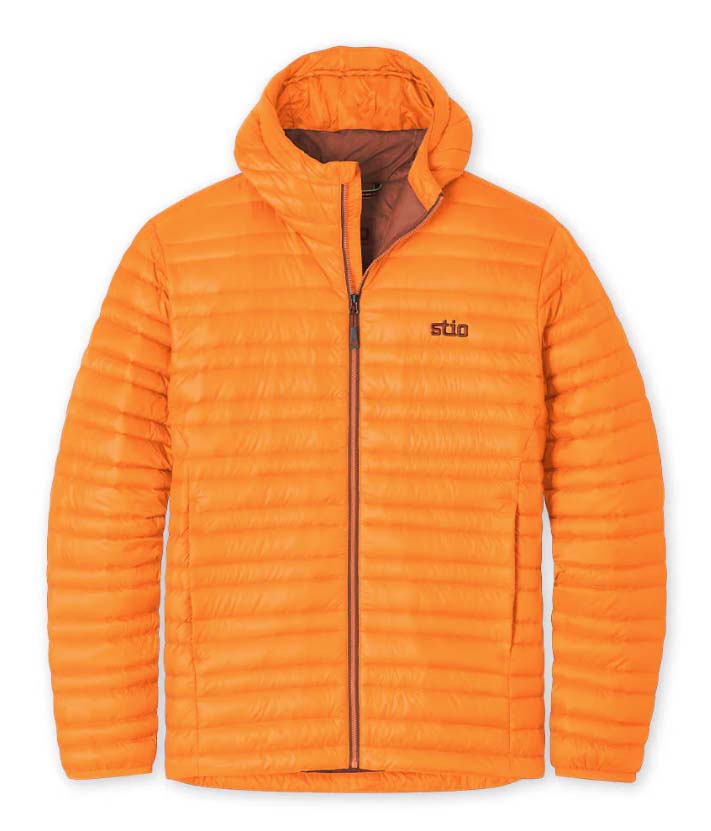 Category: Lightweight
Category: Lightweight
Weight: 12.9 oz. (men's), 12.0 oz. (women's)
Fill: 3.3 oz. of 800-fill down
What we like: High-quality down, Pertex Quantum shell, and clean-looking design at a good price.
What we don’t: Doesn’t stand out in a competitive field; below-average warmth.
Based in Jackson Hole, Stio has built a loyal following in the Mountain West, but their clean designs and mountain-town aesthetic are starting to gain serious traction nationwide. Their Pinion Down Hooded Jacket is a great example of what the brand does best: mountain-ready performance with everyday appeal. With high-quality 800-fill-power down, tightly spaced baffles, and a supple 20-denier Pertex Quantum shell, the Pinion reminds us of Patagonia’s dearly departed Ultralight Down Jacket. And in typical Stio fashion, sustainability is baked in: The jacket uses recycled fabrics, a PFC-free DWR coating, and carries a bluesign certification.
At $285, the Pinion competes directly with some of the biggest names in the down jacket world. And for the most part, it holds its own—fit and finish are top-notch, from the buttery-smooth main zipper to the functional three-pocket layout. We’ve also had no issues with durability, even after repeated wear and stuffing. That said, the jacket does come up a bit short on insulation: With just 3.3 ounces of 800-fill down in the hooded version, it falls behind options like Patagonia’s Down Sweater Hoody (5.3 oz.) in warmth. It’s also not the lightest at 12.9 ounces for a men’s small. In the end, the Pinion is a well-rounded and stylish down layer with quality materials and thoughtful details, but it doesn’t quite edge out the competition in any one category. A quick fit note: It runs a bit large—we found sizing down gave us a much better fit for layering.
See the Men's Stio Pinion Hooded See the Women's Stio Pinion Hooded
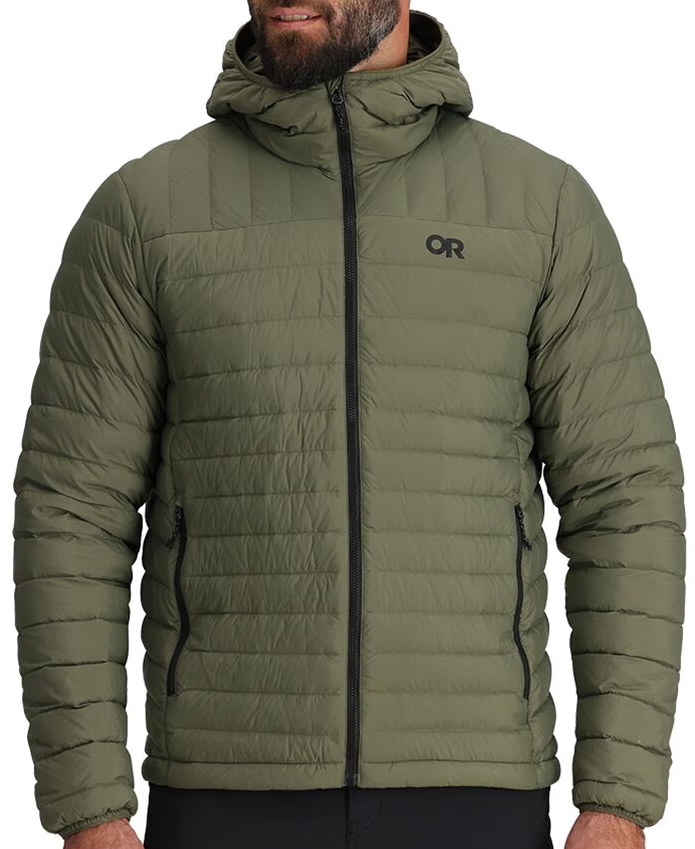 Category: Lightweight
Category: Lightweight
Weight: 13.3 oz. (men's), 11.6 oz. (women's)
Fill: 4.2 oz. of 800-fill down
What we like: Comfortable, lightweight, and a solid value for what you get.
What we don’t: Less refined than Patagonia’s Down Sweater Hoody.
The Outdoor Research Transcendent, a staple in their lineup before being discontinued, returned In 2024, and it was worth the wait. While the design isn't groundbreaking, it's a tried-and-true combination, featuring high-quality 800-fill down inside a 20-denier shell. The warmth-to-weight ratio is impressive, with the Transcendent Hoodie offering 4.2 ounces of insulation in an 13.3-ounce package (11.6 oz. for the women's version)—just 0.2 ounces more down and 0.5 ounces lighter than men's Patagonia’s Down Sweater Hoody. Even more impressive is the price: $279, which is $50 less than the Patagonia version.
That said, the Transcendent isn’t without its drawbacks. The fit is boxier and less streamlined than the more tailored designs from Patagonia or Arc’teryx. Additionally, although both the Transcendent and the Patagonia Down Sweater feature 20-denier shells, the Transcendent didn’t hold up as well in durability tests—we ended up with a small tear after just a few days of backpacking, while the Down Sweater has lasted several seasons in tougher conditions. The Patagonia jacket also offers a plusher, more sleeping bag-like feel, while the Transcendent’s smooth interior and tricot-lined hand pockets make it comfortable for layering. Overall, we think the Patagonia Down Sweater is the more refined jacket, but the Transcendent is a great option for those looking to save a bit of money without sacrificing too much performance.
Read more: OR Transcendent Down Hoodie review (women's version)
See the Men's OR Transcendent Hoodie See the Women's OR Transcendent Hoodie
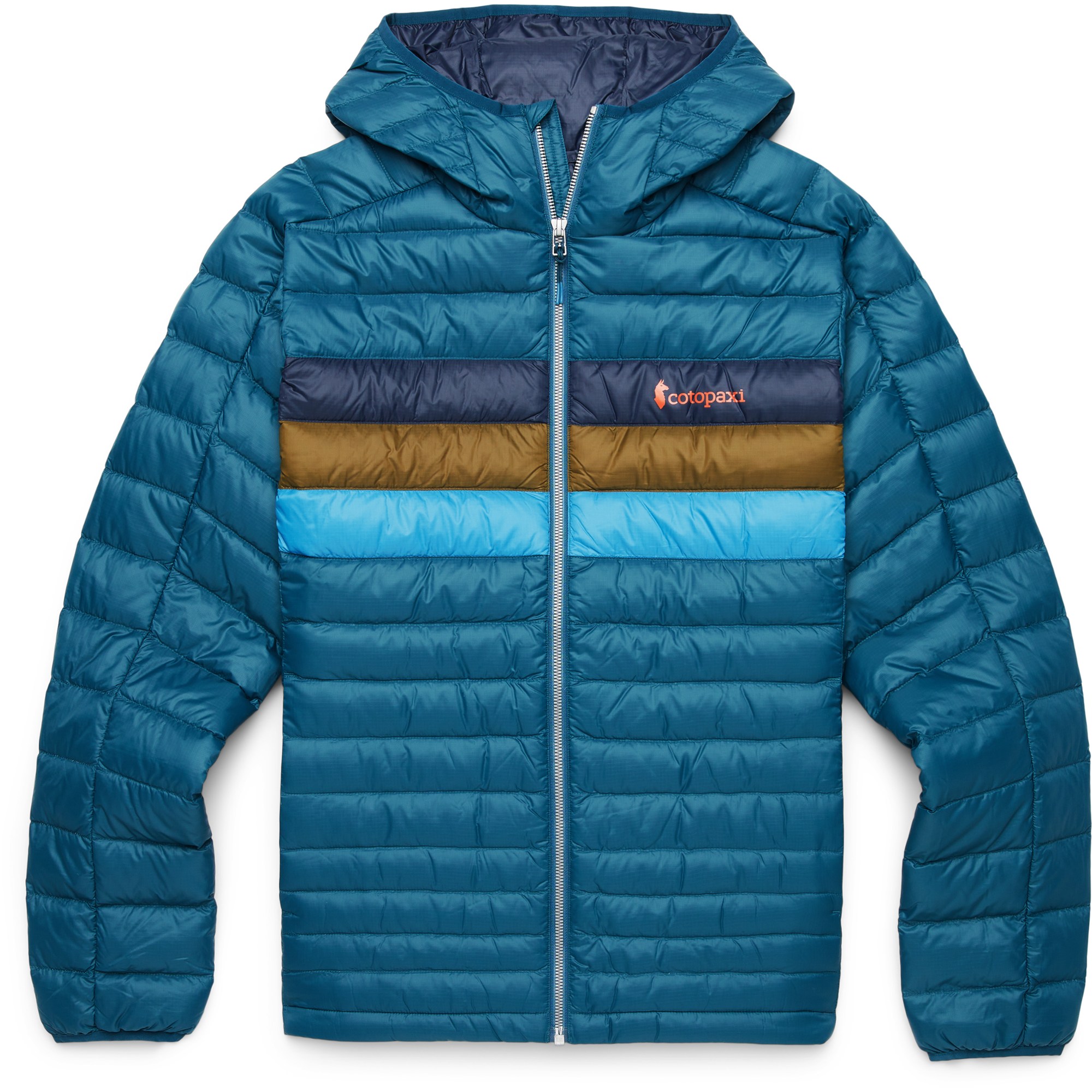 Category: Lightweight
Category: Lightweight
Weight: 14.0 oz. (men's), 11.7 oz. (women's)
Fill: 800-fill down
What we like: Retro styling with premium down fill.
What we don’t: Materials aren't very soft; not everyone likes the striped colorways.
Most down jackets play it safe when it comes to aesthetics, but Cotopaxi isn’t afraid to have a little fun. The Utah-based brand’s Fuego Down Jacket is a colorful standout, known for its retro-inspired styling and signature multi-hued baffles. But there’s more to the Fuego than good looks: It features high-quality 800-fill-power down, a reasonably tough 20-denier shell that balances weight and durability well, and responsibly sourced insulation to back its sustainable ethos. Add in Cotopaxi’s certified B Corp status and broad range of bold colorways, and the Fuego is a feel-good jacket in more ways than one.
In terms of competition, Patagonia’s Down Sweater Hoody offers similar 800-fill down, albeit in a heavier and more expensive package at $329. But while the numbers are close on paper, the real differentiator comes down to execution. The Fuego’s shell has a noticeably plasticky, slippery feel that doesn’t quite match the premium finish of top-shelf options like the Patagonia or Arc’teryx Cerium, and its boxy cut isn’t the most flattering. The women's version also runs small through the shoulders and hem, making fit tricky for broader shoulders or curvier bodies. That said, the Fuego still lands in a sweet spot for those prioritizing value and style. It may not be the most refined piece in our lineup, but for casual use, travel, and around-town wear, it’s a fun and capable insulator that’s easy to love.
Read More: Cotopaxi Fuego Hooded review (men's version)
See the Men's Cotopaxi Fuego See the Women's Cotopaxi Fuego
| Jacket | Price | Weight | Category | Fill Power |
Fill Weight |
Denier | Packable |
|---|---|---|---|---|---|---|---|
| Patagonia Down Sweater | $279 | 13.0 oz. | Lightweight | 800 | 5.0 oz. | 20D | |
| REI Co-op 650 Down Jacket | $129 | 10.9 oz. | Lightweight | 650 | 3.5 oz. | 20D | No |
| Arc'teryx Cerium Hoody | $400 | 11.9 oz. | Lightweight | 850 | 4.0 oz. | 15D | Stuff sack |
| Rab Neutrino Pro | $400 | 1 lb. 5.3 oz. | Heavyweight | 800 | 7.5 oz. | 20D | Stuff sack |
| BD Deploy Down 0.5 Pullover | $499 | 5.2 oz. | Ultralight | 1000 | N/A | 4D | |
| Himali Accelerator | $330 | 12.2 oz. | Lightweight | 850 | 4.0 oz. | Unavail. | Stuff sack |
| La Sportiva Supercouloir 1000 | $449 | 15.5 oz. | Midweight | 1,000 | 5.3 oz. | Unavail. | |
| Outdoor Research Coldfront | $279 | 1 lb. 4.7 oz. | Midweight | 700 | 6.7 oz. | 30D | |
| Fjallraven Expedition Pack | $280 | 1 lb. 1.3 oz. | Light/midweight | 700 | 3.9 oz. | Unavail. | |
| OR Helium Down | $299 | 1 lb. 0.2 oz. | Lightweight | 800 | 3.9 oz. | 15Dx30D | |
| Feathered Friends Eos | $409 | 11.8 oz. | Lightweight | 900 | 3.7 oz. | 12Dx20D | Stuff sack |
| Rab Microlight Alpine | $295 | 1 lb. 0.5 oz. | Light/midweight | 700 | 5.4 oz. | 30D | Stuff sack |
| Stio Pinion Down Hooded | $285 | 12.9 oz. | Lightweight | 800 | 3.3 oz. | 20D | |
| OR Transcendent Hoodie | $279 | 13.3 oz. | Lightweight | 800 | 4.2 oz. | 20D | |
| Cotopaxi Fuego | $295 | 14.0 oz. | Lightweight | 800 | Unavail. | 20D |
| Jacket | Price | Weight | Category | Fill Power |
Fill Weight |
Denier | Packable |
|---|---|---|---|---|---|---|---|
| Patagonia Down Sweater | $279 | 10.3 oz. | Lightweight | 800 | 3.5 oz. | 20D | |
| REI Co-op 650 Down Jacket | $129 | 10.2 oz. | Lightweight | 650 | 3.3 oz. | 20D | No |
| Arc'teryx Cerium Hoody | $400 | 10.2 oz. | Lightweight | 850 | 4.0 oz. | 15D | Stuff sack |
| Rab Neutrino Pro | $400 | 1 lb. 2.7 oz. | Heavyweight | 800 | 7.0 oz. | 20D | Stuff sack |
| Rab Mythic Alpine Light | $330 | 8.0 oz. | Ultralight | 900 | 2.1 oz. | 10D | Stuff sack |
| Patagonia Down With It Parka | $349 | 2 lb. 5.0 oz. | Midweight | 600 | 8.3 oz. | 50D | No |
| Outdoor Research Coldfront | $279 | 1 lb. 5.2 oz. | Midweight | 700 | 5.6 oz. | 30D | |
| Fjallraven Expedition Pack | $280 | 15.3 oz. | Lightweight | 700 | 3.5 oz. | Unavail. | |
| OR Helium Down | $299 | 15.4 oz. | Lightweight | 800 | 3.9 oz. | 15Dx30D | |
| Feathered Friends Eos | $409 | 11.1 oz. | Lightweight | 900 | 3.7 oz. | 12Dx20D | Stuff sack |
| Rab Microlight Alpine | $295 | 14.6 oz. | Light/midweight | 700 | 5.1 oz. | 30D | Stuff sack |
| Stio Pinion Down Hooded | $285 | 12.0 oz. | Lightweight | 800 | 3.3 oz. | 20D | |
| OR Transcendent Hoodie | $279 | 11.6 oz. | Lightweight | 800 | 4.2 oz. | 20D | |
| Cotopaxi Fuego | $295 | 11.7 oz. | Lightweight | 800 | Unavail. | 20D |
Whether we’re jamming cracks, skinning up powdery slopes, or grabbing a quick bite on the trail, cozy down jackets are staples in our kits—and we rarely leave home without one. Former editor-in-chief John Ellings drew from his experience on endless local romps in the Pacific Northwest and far-flung international expeditions to hone in on our initial list of 11 jackets back in 2015. Down jacket testing was taken over in early 2024 by senior editor Chris Carter, managing editor Sarah Nelson, and editor-in-chief Penney Garrett, with help from other key members on our team. Chris is a diehard thru-hiker, climber, and globetrotter who’s tackled the Triple Crown of long-distance hiking in the U.S. (AT, PCT, and CDT). Sarah is an accomplished climber, backpacker, and skier who is always on the move in her truck camper, scouting out beautiful places to adventure. And Penney is a veteran outdoorswoman across many disciplines and currently lives in Lake Tahoe, a mecca for any and every sport you could want to dabble in. Together, this crew brings a wealth of experience to this review and can fully stand behind the jackets in our lineup.
We’ve logged serious miles in all the jackets listed above, across just about every terrain and climate imaginable, to bring you our list of 17 top performers. From icy alpine starts and windy desert belays to long-haul thru-hikes and quick town errands, each piece was tested in the environments it was designed for. Every jacket had to earn its spot through rigorous real-world testing and prove its mettle in multiple categories. We evaluated warmth-to-weight ratio, packability, weather protection, comfort, and long-term durability—making sure each contender could take a beating and still deliver. Only the true standouts made the cut, and we continue to retest and refine our list as new models hit the market and old favorites get updated. Rest assured, the jackets above aren’t just warm—they’re the best of the best.
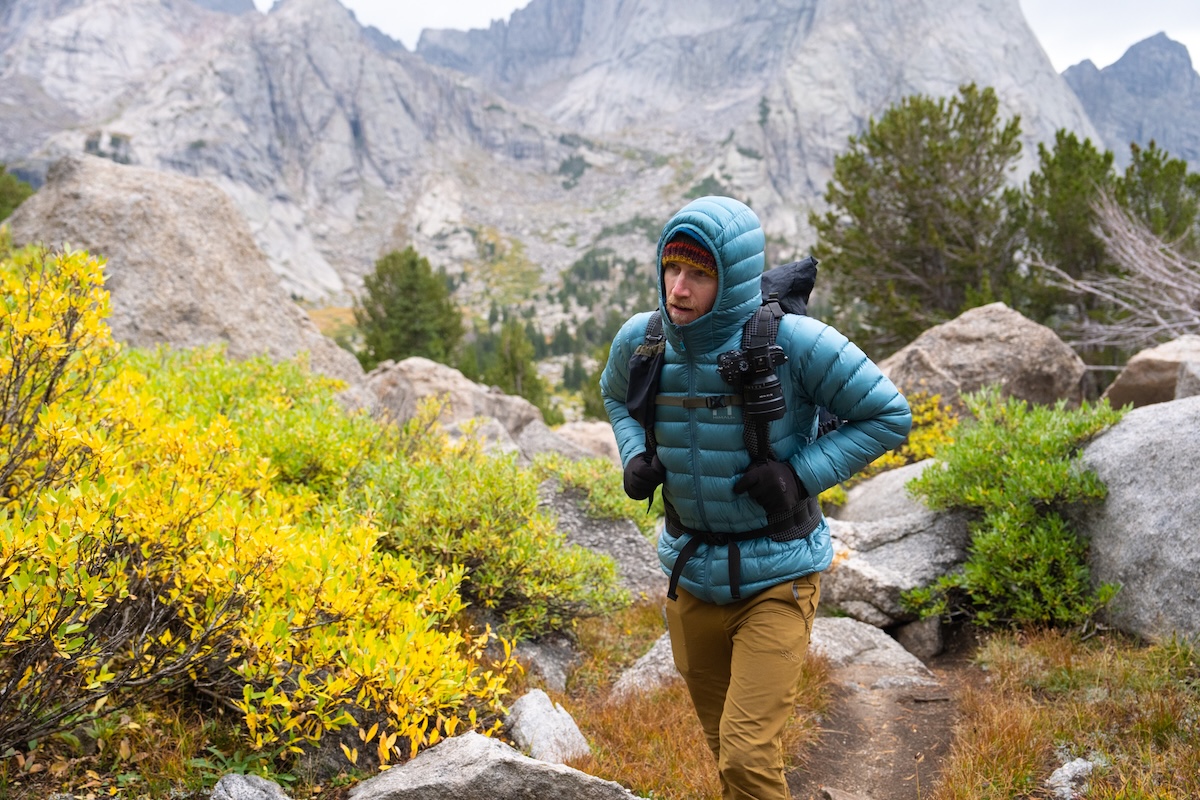
Lightweight
The lightweight down jacket category is by far the most popular, appealing to those seeking versatile warmth for everyday use. These jackets prioritize comfort and functionality, though you won’t find features like helmet-compatible hoods or slim, athletic fits. They excel in casual wear, travel, light outdoor activities, and as layers for winter sports. In terms of temperature range, lightweight jackets generally perform best in the 35 to 50°F range, depending on layering and how much activity you’re doing (more on this in "Our Estimated Temperature Scale" below). Top models include the Patagonia Down Sweater, REI Co-op 650 Down Jacket, and Cotopaxi Fuego.
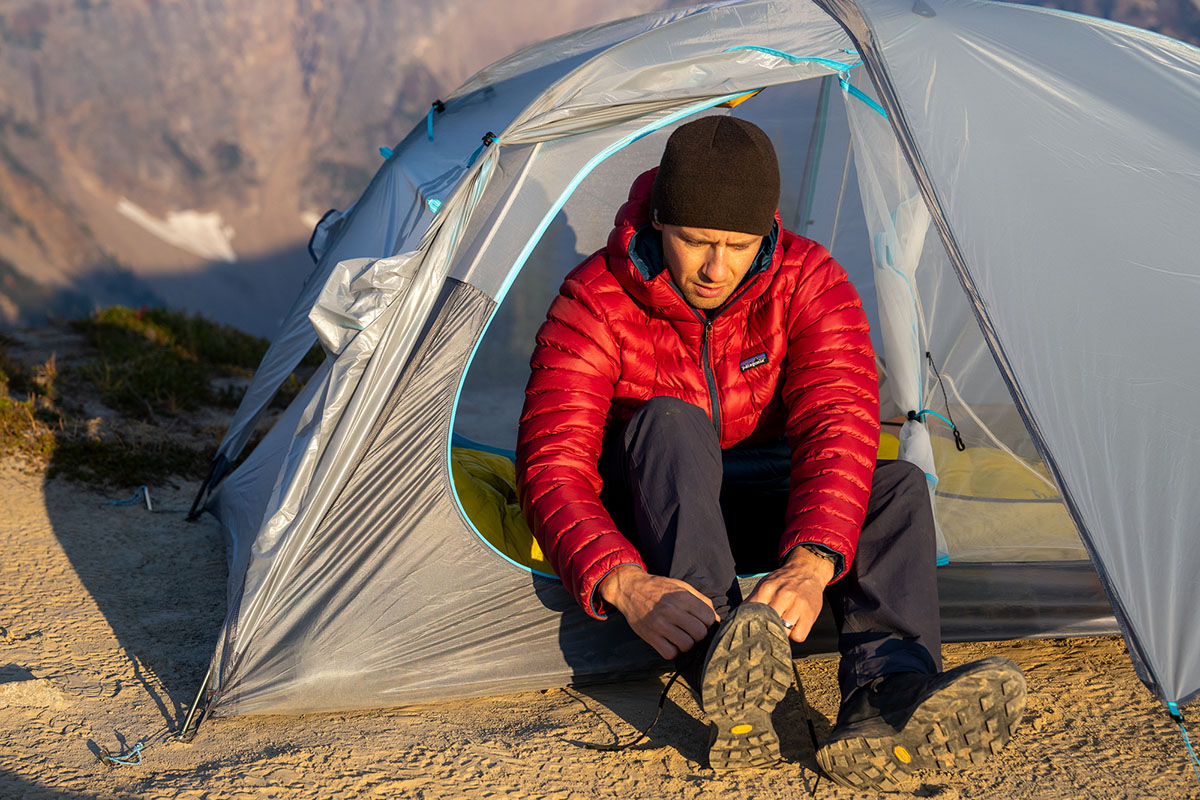
Ultralight
Ultralight down jackets are highly specialized pieces built for activities like backpacking, climbing, and backcountry skiing, where every ounce counts. While their fill weights are often similar to lightweight down jackets, they stand out for their use of high-quality down (fill power), lightweight shell fabrics (denier), and minimalist features like zippers and pockets. A true standout in this category is Black Diamond's impossibly light 5.3-ounce Deploy Pullover. Interestingly, many of these jackets, such as the Rab Mythic Alpine Light, are also worn as everyday layers in urban environments. These jackets deliver a great balance of warmth for their weight, and with a little extra care to protect the delicate shell, they provide an athletic fit that’s perfect for layering.
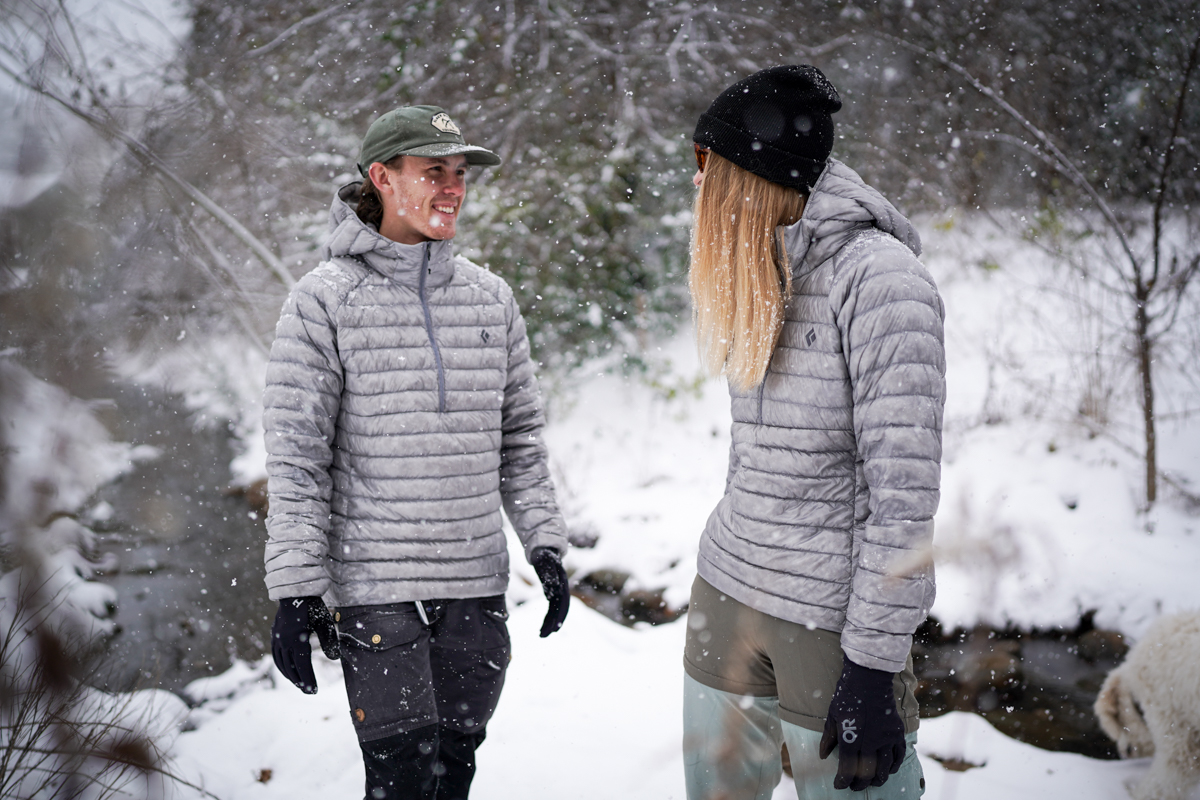
Midweight and Heavyweight
Mid- and heavyweight down jackets offer a significant leap in warmth compared to their lightweight and ultralight counterparts, making them ideal for demanding winter conditions like alpine climbing and mountaineering. These jackets typically feature fill weights that range from 7.5 ounces (such as the Rab Neutrino Pro) to even higher amounts, a major step up from the 3- to 4-ounce range of lighter models. As a result, they tend to be much bulkier and take up more room in your pack, which is why we reserve them for situations where extra warmth is crucial. To maintain a good warmth-to-weight ratio, many of these jackets utilize top-tier down insulation. For example, La Sportiva's Supercouloir Jacket uses 1000-fill-power down, offering impressive warmth while still packing down efficiently. We've highlighted several of our favorite mid- and heavyweight options in this guide, but for a more detailed look, check out our round-up of the best winter jackets.
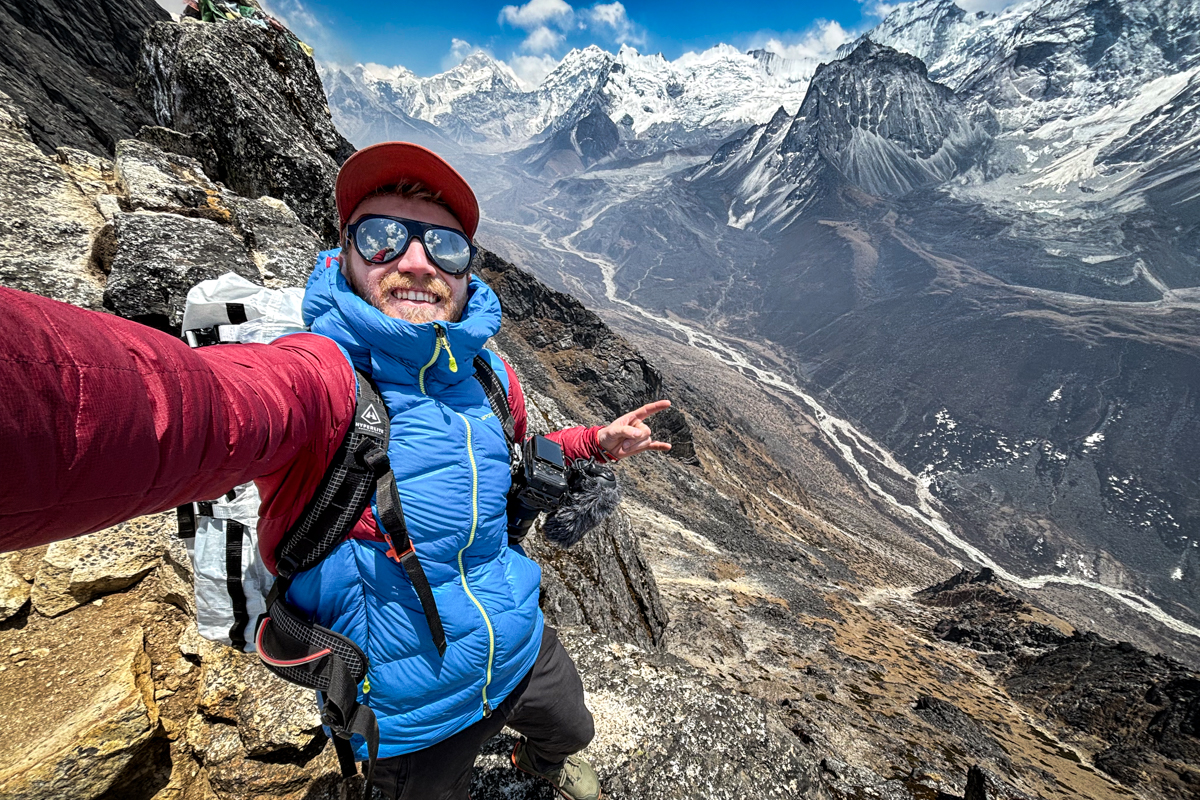
There’s nothing quite like the plush, premium warmth that down insulation provides. The reason down works so well is that the loose clusters of feathers are exceptional at trapping body heat. However, unlike down sleeping bags, which have an official EN rating system to measure and quantify warmth, down jackets lack a standardized scale. Keep reading for the information that can help you navigate this uncharted territory.
Fill Power
Fill power (600-fill, 700-fill, 800-fill, and so on) measures the quality of down, with higher fill numbers indicating better down. The number is determined by how much space one ounce of down clusters occupies in a cylindrical tube, known as loft. The greater the loft, the more heat the down traps, making the jacket warmer. In simpler terms, to achieve the same level of warmth with a lower fill power, more down is needed, which increases weight and bulk while remaining at the same comfort level.
.jpg)
For jackets, you'll typically find 550 to 650-fill down in most entry-level and mid-range models. While this is perfectly fine for everyday wear, it doesn't quite cut it for high-performance use. Premium down starts at 800-fill and above, which is used by brands like Arc'teryx, Patagonia, and Mountain Hardwear in their top-tier jackets. At this level, you get the well-known benefits of down insulation: lightweight warmth that's also highly compressible. Some high-end climbing brands, such as Feathered Friends and Montbell, even use 900-fill down, though that's quite rare, with 800-fill generally being the benchmark for premium quality.
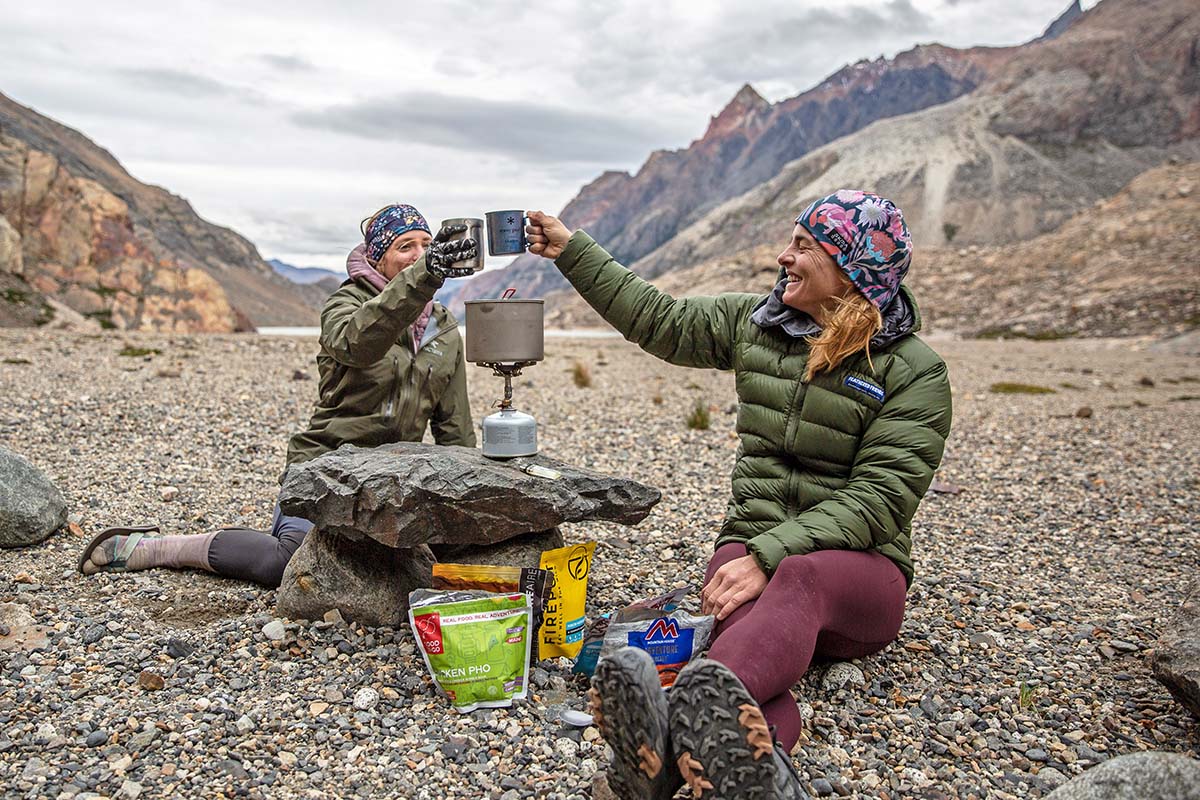
In 2013, Patagonia introduced the Encapsil, a 1,000-fill down jacket, but it hasn't returned to the market since. Currently, Montbell offers the 1,000-fill Plasma Down Jacket and Parka, which feature lightweight 7D shells. These are ideal for ultralight adventurers, but with just 1.6 ounces of fill, they aren't suitable for extreme conditions. For colder temperatures at higher altitudes, we recommend La Sportiva's Supercouloir Jacket, which packs 5.3 ounces of 1,000-fill down into a durable shell, making it perfect for freezing mountaineering expeditions where both warmth and durability—while keeping weight to a minimum—are crucial.
Fill Weight
While fill power often gets the spotlight, fill weight is arguably the more crucial factor in determining a down jacket’s warmth. Fill weight refers to the actual amount of down in a jacket, measured in ounces. For instance, if Jacket A contains 6 ounces of 800-fill down and Jacket B has only 3 ounces of the same fill power, Jacket A will be much warmer (we estimate it could boost comfort in low-output activities by roughly 10-20 degrees). Lower fill power down provides less warmth per ounce, so to make a fair comparison, it's best to look at jackets with similar fill powers.
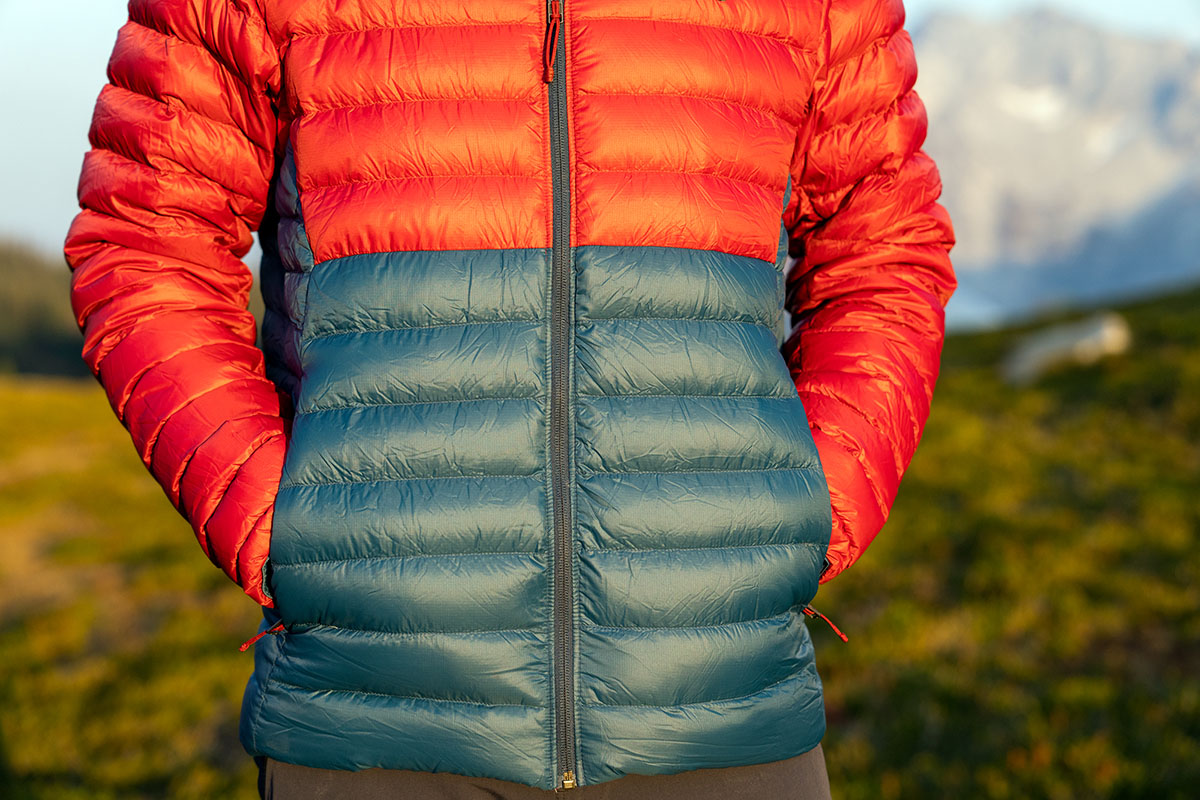
It’s interesting that fill weight tends to be less emphasized than fill power, which can create confusion for shoppers who assume higher fill power always equates to more warmth. Fill power numbers certainly have more appeal, and as a result, we often find ourselves reaching out to manufacturers to get the fill weight, as it’s often not listed (for more details, check out our article: Down Fill and Insulation Explained).
Our Estimated Temperature Scale
Pinpointing an exact temperature range for comfort in a down jacket is tricky (which is why no standardized rating system exists). Things like fit, layering, activity level, circulation, and wind all influence how warm you’ll feel.
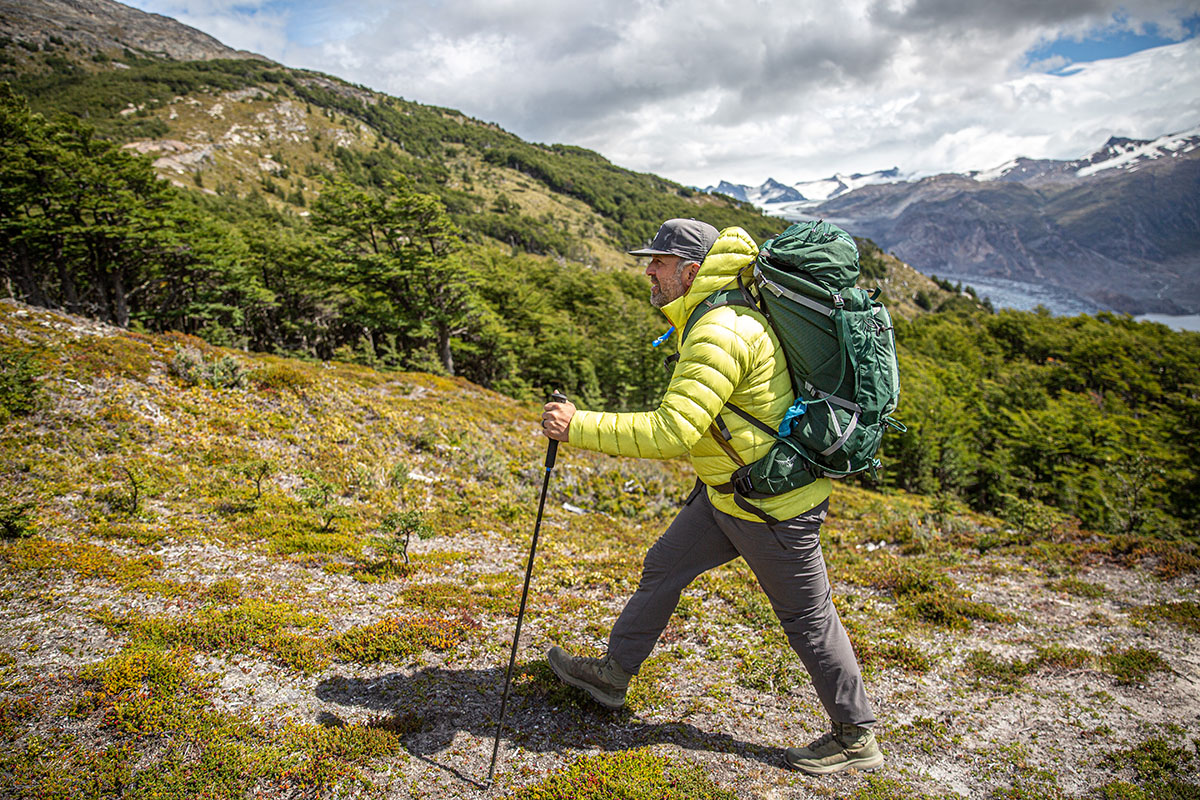
Generally, down sweaters and ultralights, which typically have between 2 to 4 ounces of fill, provide solid warmth in conditions around 35 to 60°F (2 to 15°C) with light activity, like hanging around a campsite. More fill will bring you closer to the lower end of that range, while less fill will move you toward the middle. Adding a cozy baselayer can extend that range by 5 to 15 degrees, depending on thickness and quality. These jackets are a go-to for three-season alpine adventures and everyday use in cities, except during the coldest winter months.
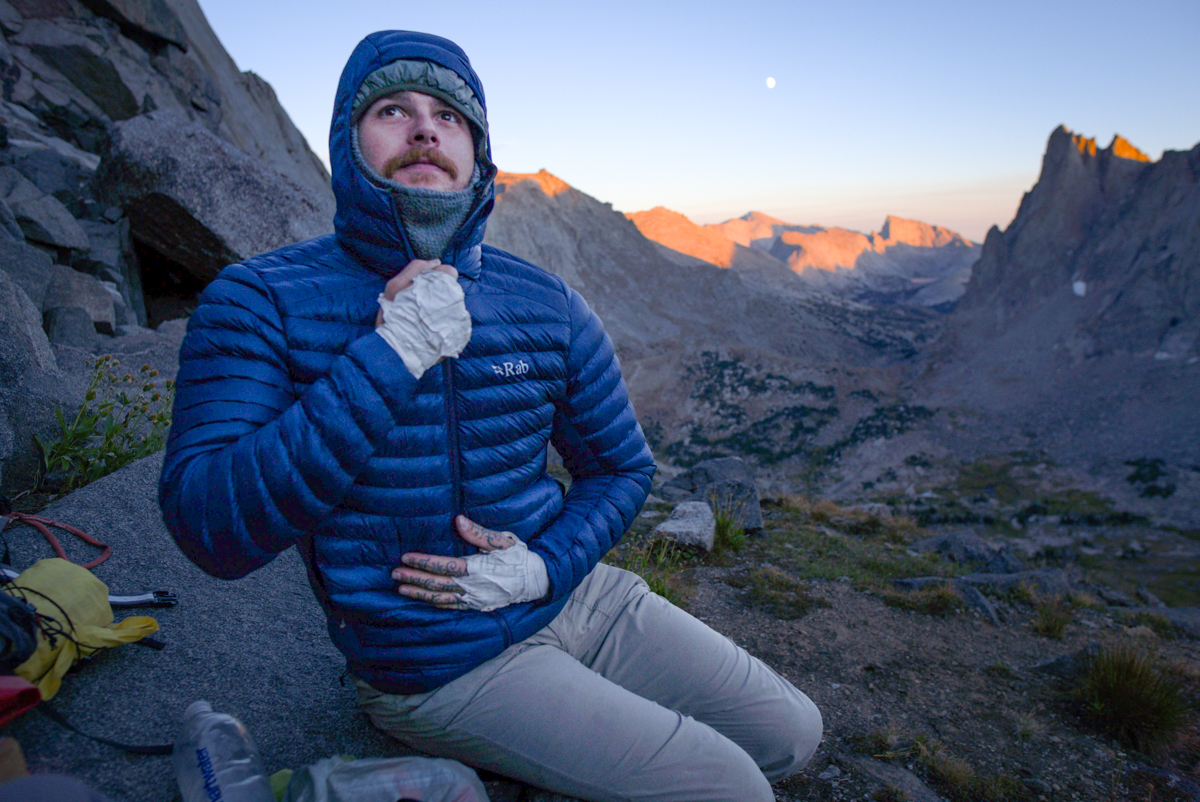
When temperatures dip below freezing, a midweight or heavyweight down jacket will keep you much more comfortable for winter conditions. These jackets typically have a minimum fill weight of 4 ounces, with most ranging from 5 to 6 ounces or more (for example, the Rab Neutrino Pro packs 7.5 ounces of down). For extreme cold or high-altitude climbs, you might want to opt for an even thicker down parka to ensure warmth.
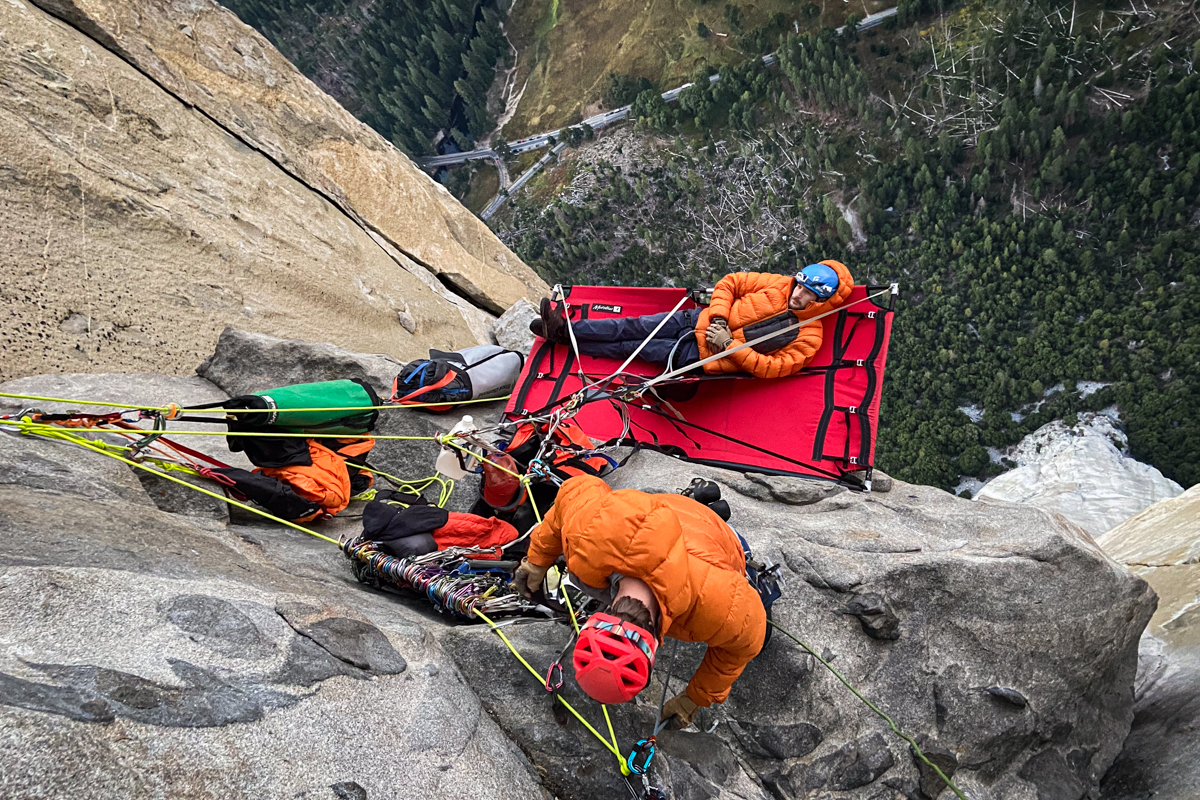
For activities like backpacking, climbing, mountaineering, or ski touring—where you're carrying your own gear—the total weight of your down jacket should be a key consideration. Jackets like the Rab Mythic Alpine Light (8.8 oz.) and Black Diamond Deploy (5.2 oz.) offer excellent warmth with minimal weight and compress down to a very small size in your pack. However, the advanced tech that makes these jackets so lightweight and packable comes at a premium price. On the other hand, if you just need a jacket for casual use and occasional outdoor activities like downhill skiing, a heavier and more affordable option like the 1-pound-4.7-ounce Outdoor Research Coldfront will do the trick. For true winter conditions, expect to need a heavier option, such as Rab's 1-pound-5.3-ounce Neutrino Pro.
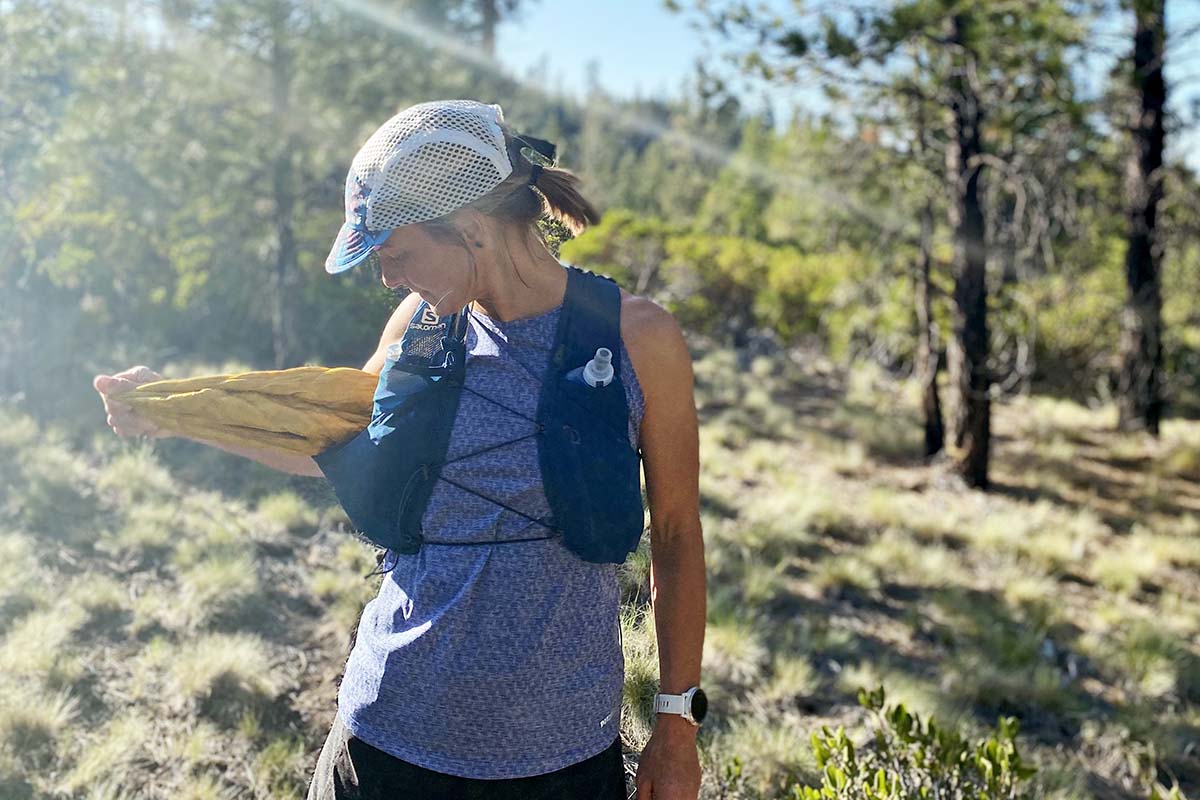
“Ultralight” is a term you’ll often encounter while shopping for a down jacket, but it’s important to remember that there’s no strict definition of what qualifies as ultralight. We pay attention to the ratio of fill weight to total weight to gauge how much effort the manufacturer put into minimizing weight (the shell denier is also a good indicator, which we’ll cover below). On the extreme end, Montbell's Plasma 1000 packs just 1.6 ounces of down into an incredibly light 4.9-ounce jacket. To shed weight, gear brands often make changes to zippers, opt for a trim fit, and eliminate pockets. Some even go for a pullover style to remove half the zipper, such as with the Black Diamond Deploy. Regardless of the label a jacket carries, it’s always best to check both the fill weight and total weight to assess whether it truly qualifies as ultralight for your needs.
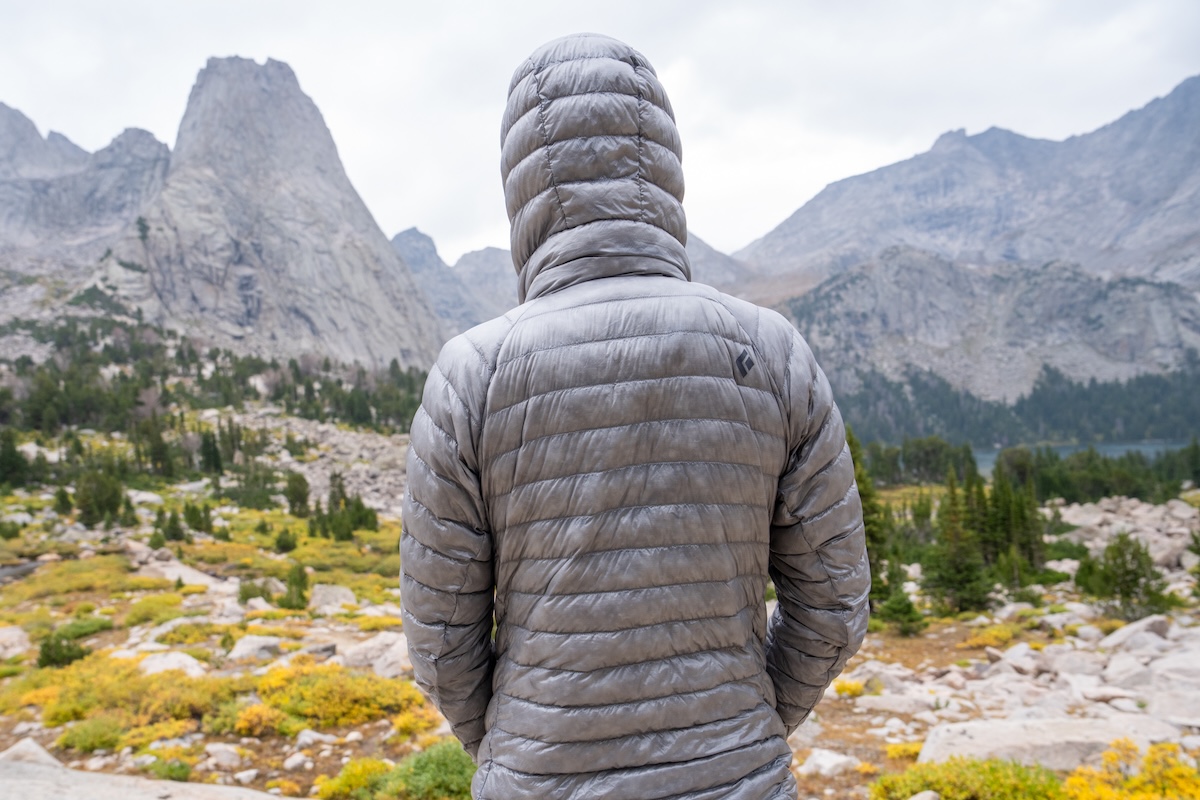
Denier (D) refers to the thickness of the threads used in a fabric, and the lower the number, the lighter—and typically less durable—the material. Jackets with low-denier shells are more prone to snags and tears, which is something to keep in mind if you’re tough on gear. That said, one of the main ways manufacturers cut weight on ultralight down jackets is by using lower-denier fabrics for the shell. While high-fill-power down and ultralight zippers also help shave ounces, the shell material plays the biggest role in keeping overall weight down.
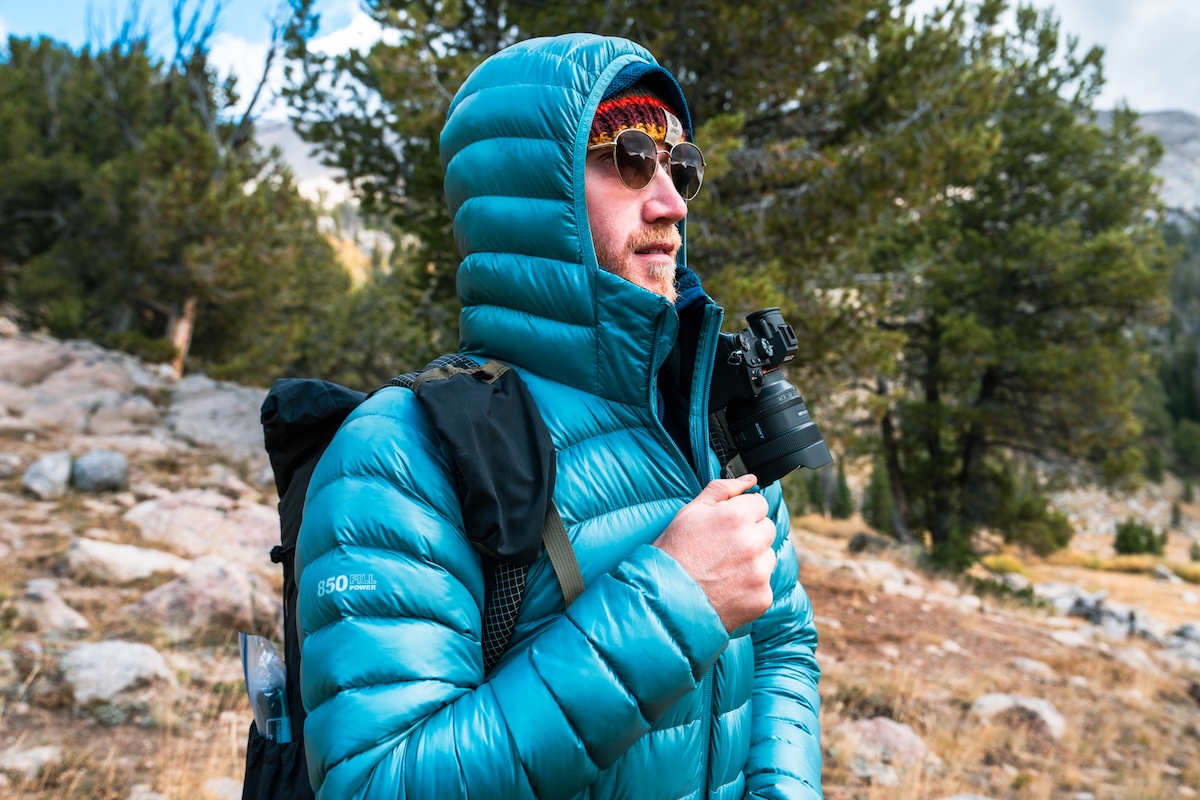
Most of the jackets we recommend use fairly lightweight shell materials, but there’s still a wide range in durability and feel. On the ultra-thin end is the Montbell Plasma 1000 (not featured here) with its super delicate 7-denier fabric, while more robust options can reach 30D or higher. For reference, 10D is common among ultralight designs, while 20D is typical for standard down sweaters. That jump from 10D to 20D may not seem huge, but it can have a real impact on both a jacket’s weight and its long-term durability. If you’re counting ounces and heading into the backcountry, go ultralight. But if your jacket will mostly see action around town, a burlier down sweater will likely last longer and cost you less.
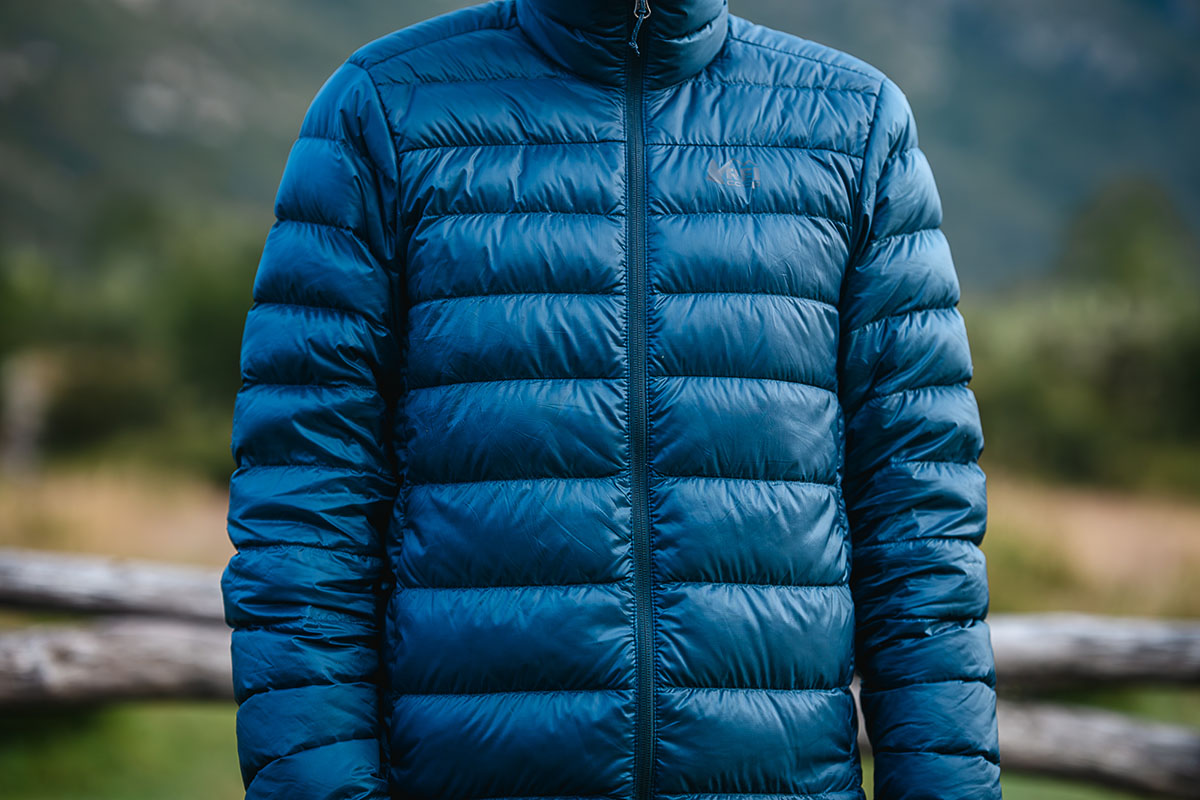
Denier plays a big role in a jacket’s toughness, but it’s not the only factor to consider when assessing durability. One key element is the shell fabric technology. Pertex’s Quantum Pro—used in jackets like the Rab Neutrino Pro—is one of our favorites, offering excellent abrasion resistance even in thin constructions (we’ve tested 10D Quantum Pro shells that held up impressively well). Another standout is Pertex’s Diamond Fuse, featured on the OR Helium Down, which boosts durability with a unique yarn structure. Lastly, stretch-woven fabrics are becoming more common and bring a nice mix of flexibility, comfort, and enhanced tear resistance to the table.

One of the biggest perks of down insulation—especially for ounce counters—is how well it compresses. Featherweight jackets like the Black Diamond Deploy can stuff into their own pocket and shrink down to smaller than a Nalgene bottle, making them incredibly easy to toss in a daypack or backpacking pack without thinking twice. Additionally, the higher the fill power, the better the compressibility. Premium down (800-fill and above) can squash down impressively small and spring back to full loft quickly, as long as it hasn’t been stored tightly packed for too long. Shell fabric plays a role too: thinner denier materials pack smaller than beefier shells. This is one of the key reasons down still holds a clear edge over synthetic insulation when space and packability matter most.
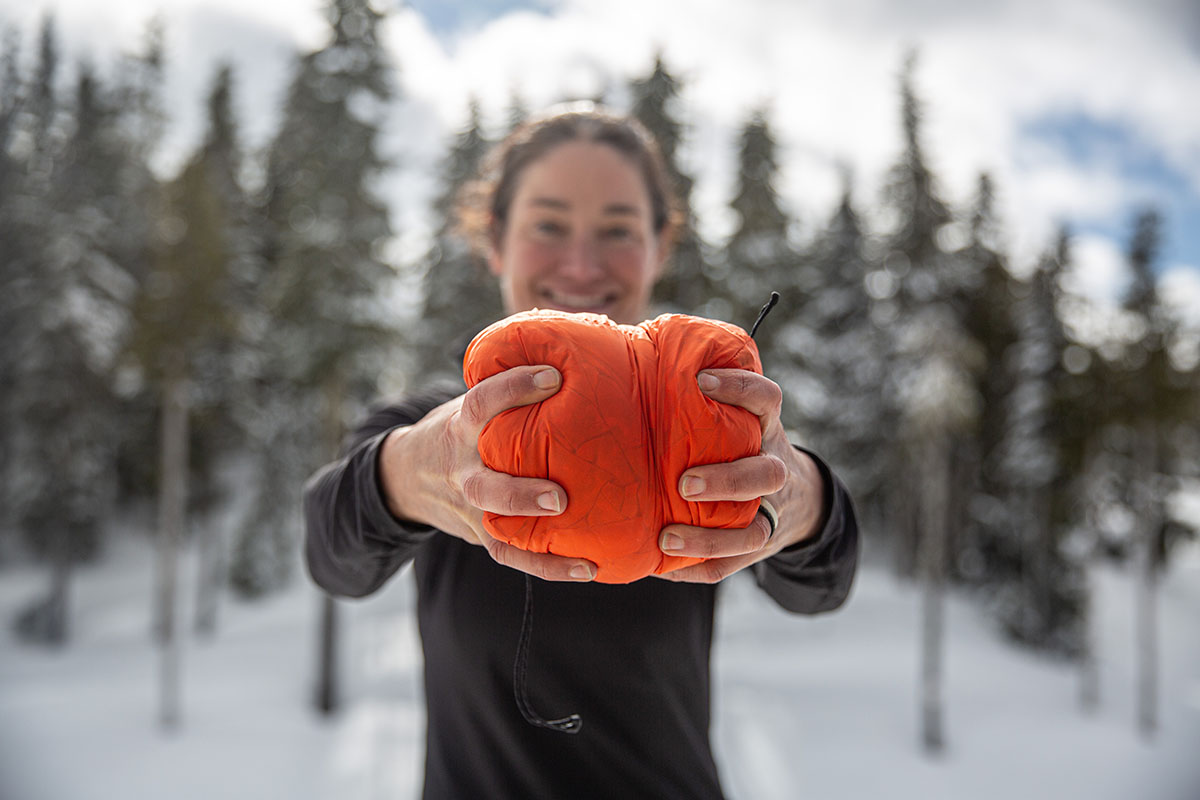
Down’s biggest weakness is its vulnerability to moisture—get it wet, and those lofty feathers clump up, losing their insulating power fast. That’s why in damp climates or during high-output activities where sweat is a factor, many folks turn to a synthetic jacket, which continues to insulate even when soaked. That said, hydrophobic down has changed the game. Many brands now treat their down with a water-resistant polymer that helps it repel moisture and stay lofted longer in light rain or snow. It’s not quite on par with synthetics in truly wet conditions, but it’s a big step forward. If you’re adventuring in rainy zones like the Pacific Northwest or New Zealand, a jacket like the Rab Microlight Alpine—with hydrophobic down and a solid shell—can give you the best of both worlds.
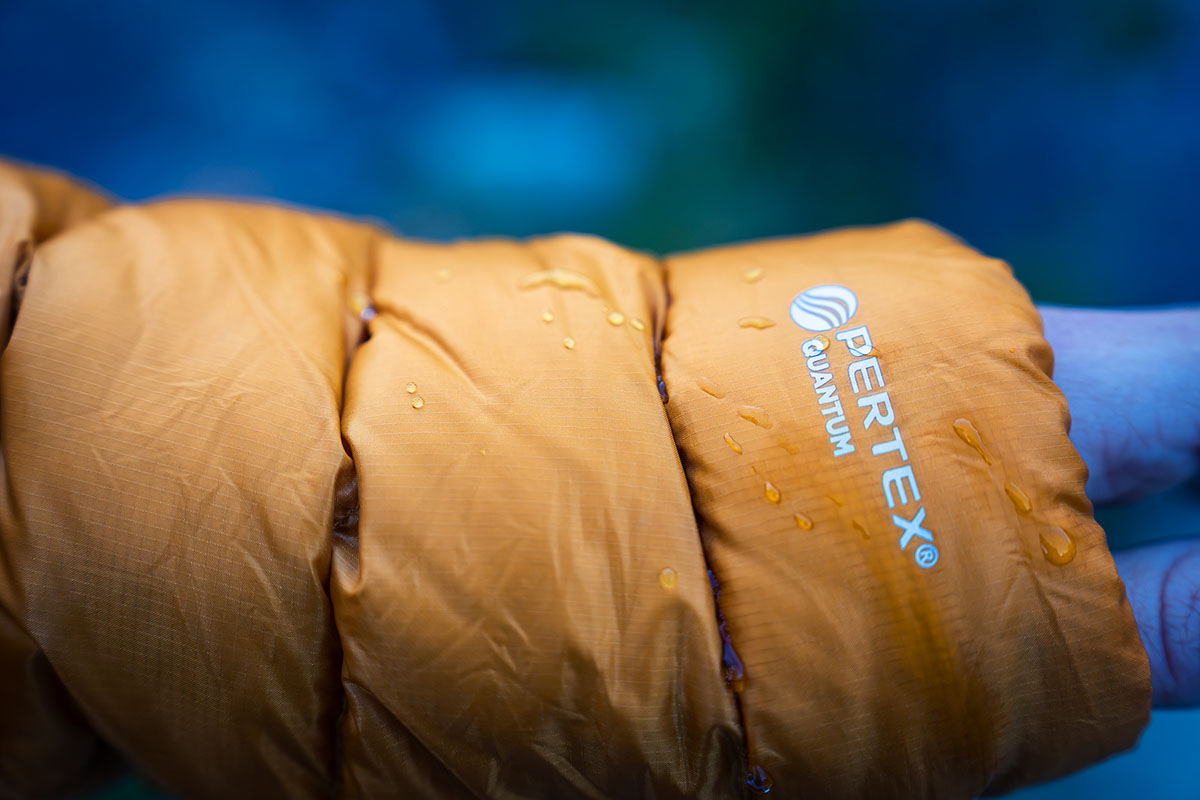
Another common defense against moisture is a DWR (durable water repellent) finish applied to the jacket’s outer fabric. This treatment causes water to bead up and roll off rather than soak into the material, giving you a buffer against light rain or snow. While DWR alone won’t make a jacket waterproof—and neither will hydrophobic down—it’s a solid first line of defense. Together, these technologies can go a long way in keeping you dry during short bouts of precipitation or in damp, drizzly conditions.
Fit will always depend on the specific jacket, but there are a couple key themes to keep in mind. For one, casual down sweaters tend to have more generous cuts—think boxier torsos, wider arms, and roomier hoods (when included)—compared to sleeker, performance-oriented pieces. Brand differences also stand out. Arc’teryx jackets, for example, are famously slim-fitting (like the Cerium Hoody)—a style we often refer to as the “Arc’teryx fit.” They are designed with guides and high-output users in mind, which explains the trim profile. Rab and Himali also lean athletic in their cuts, while Patagonia, Outdoor Research, and Mountain Hardwear strike a nice middle ground between casual comfort and technical performance. On the roomier side, REI Co-op and Marmot tend to offer more generous sizing, and we’ve found ourselves sizing down at times (including with our REI 650 Down Jacket).
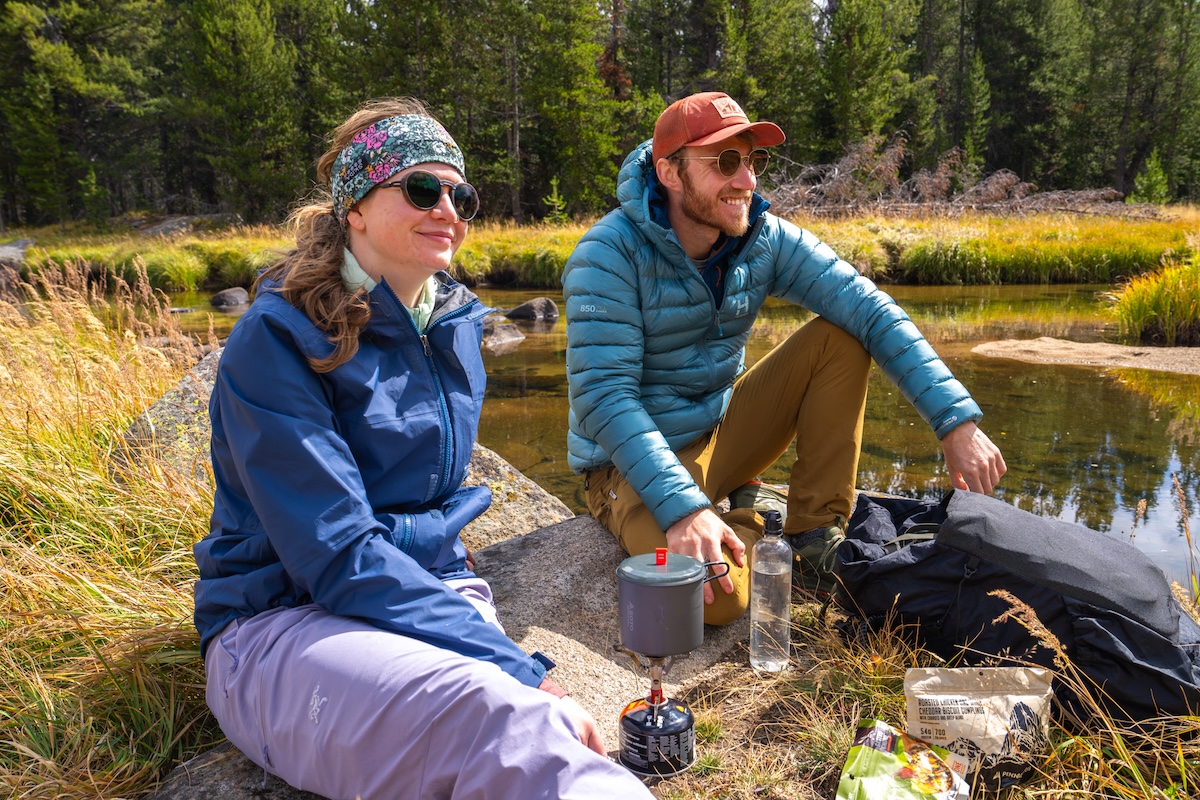
Most of the down jackets we’ve featured come in both hooded and non-hooded styles. Going without the hood usually shaves a little weight and cost, which can be appealing if you’re trying to keep things streamlined. That said, a hood adds noticeable warmth and comfort, especially in cold or windy conditions. For casual wear or as a midlayer under a ski shell, many folks skip the hood (or opt for a down vest) and just pack a beanie. But for backcountry pursuits like climbing or backpacking, a hooded jacket is often worth the extra ounces. In our round-up, we’ve highlighted non-hooded versions when available, since they tend to be the more popular pick for casual use, and listed the ultralight models with hoods, which are often preferred for more technical applications. If you’re still on the fence, we cover the pros and cons more in-depth in our article: Does Your Down Jacket Need a Hood?
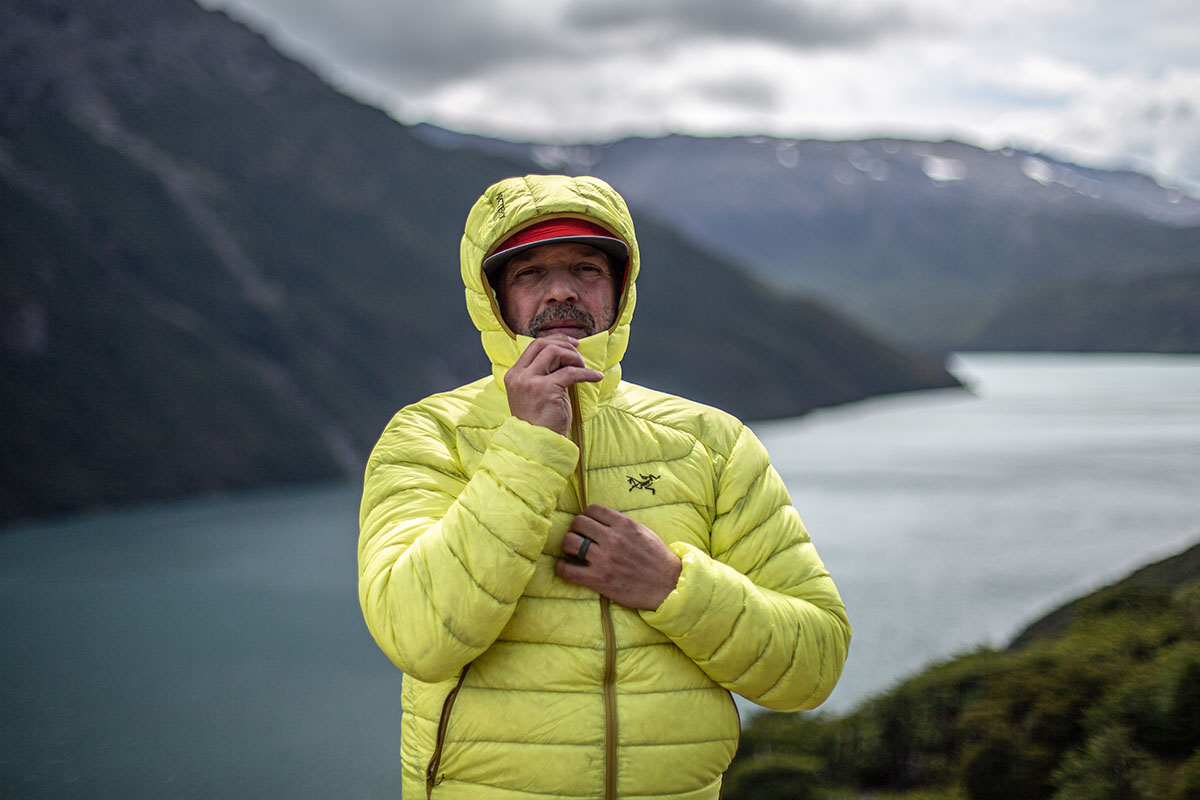
This article is unisex in nature, and we have both male and female gear testers getting outdoors in all seasons and types of conditions. In addition, we have created a round-up of the best women’s-specific down jackets covering that category in particular. Many of the models are the same but the names and colorways sometimes vary. On occasion, a specific design feature will differ, and women's down jackets often have a bit less downfill than their male counterparts, as you can see in the tables and specs above. And there are, of course, products that are only available for women or vice versa. In general, women's jackets will have more curve built into the shape, but if that design-feature doesn't work for your body, opting for a men's jacket is a perfectly reasonable approach.
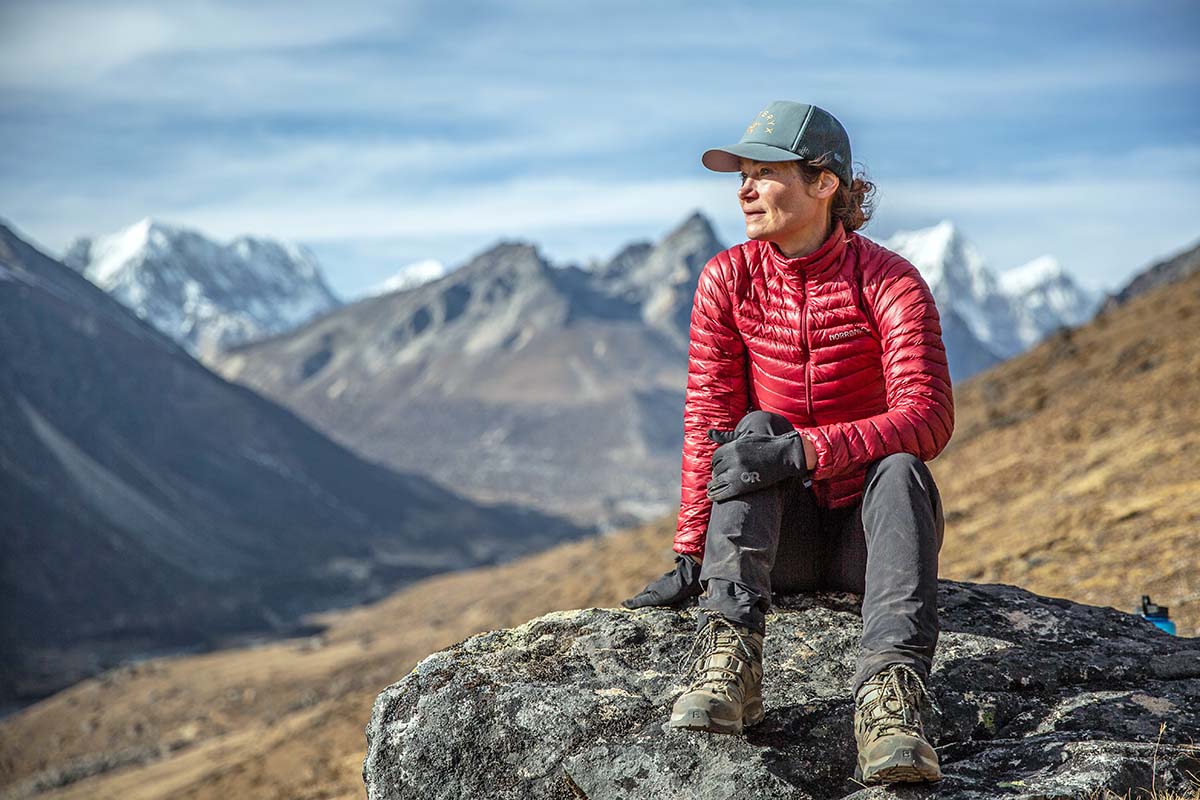
With environmental impact front and center these days, it’s encouraging to see more outdoor brands stepping up their sustainability efforts. One of the biggest changes we’ve noticed is the widespread use of responsibly sourced down—keep an eye out for an RDS (Responsible Down Standard) certification. This ensures the insulation was sourced ethically, with safeguards in place to protect birds from practices like force-feeding or live-plucking. In addition, recycled shell and lining fabrics are becoming increasingly common. Brands like Patagonia, REI Co-op, and Mountain Hardwear are leading the charge here, building high-quality jackets while reducing their environmental footprint.
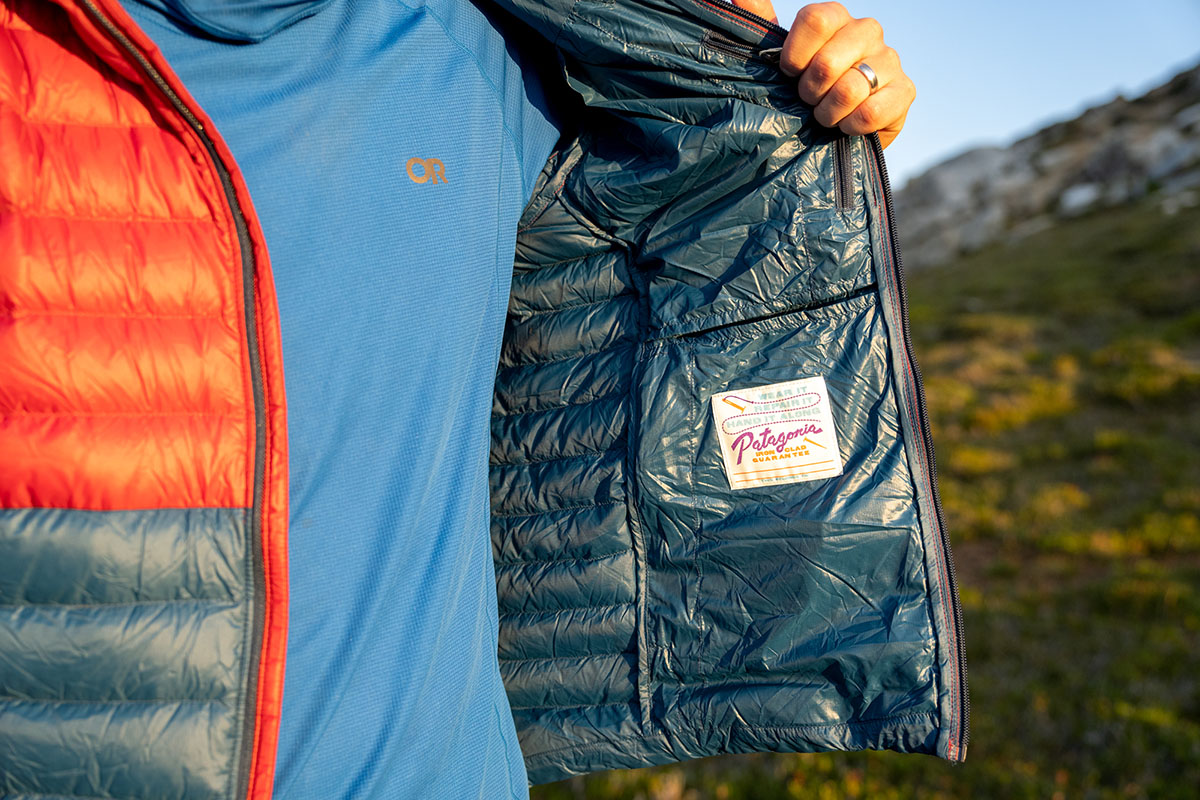
One final sustainability trend worth highlighting is the shift toward PFAS-free durable water repellent (DWR) finishes. As mentioned above, DWR helps keep moisture from soaking into your jacket, but traditional versions rely on per- or polyfluorinated chemicals—commonly called “forever chemicals” for their persistence in the environment. With growing awareness around their environmental and health impacts, and new regulations restricting their use in several states, outdoor brands are being pushed to find safer alternatives (for more, you can read about Patagonia’s take on the issue). Thankfully, the industry is responding. Companies like Stio, Black Diamond, and Patagonia have already begun phasing in PFAS-free DWR finishes, offering similar performance while being much gentler on the planet.
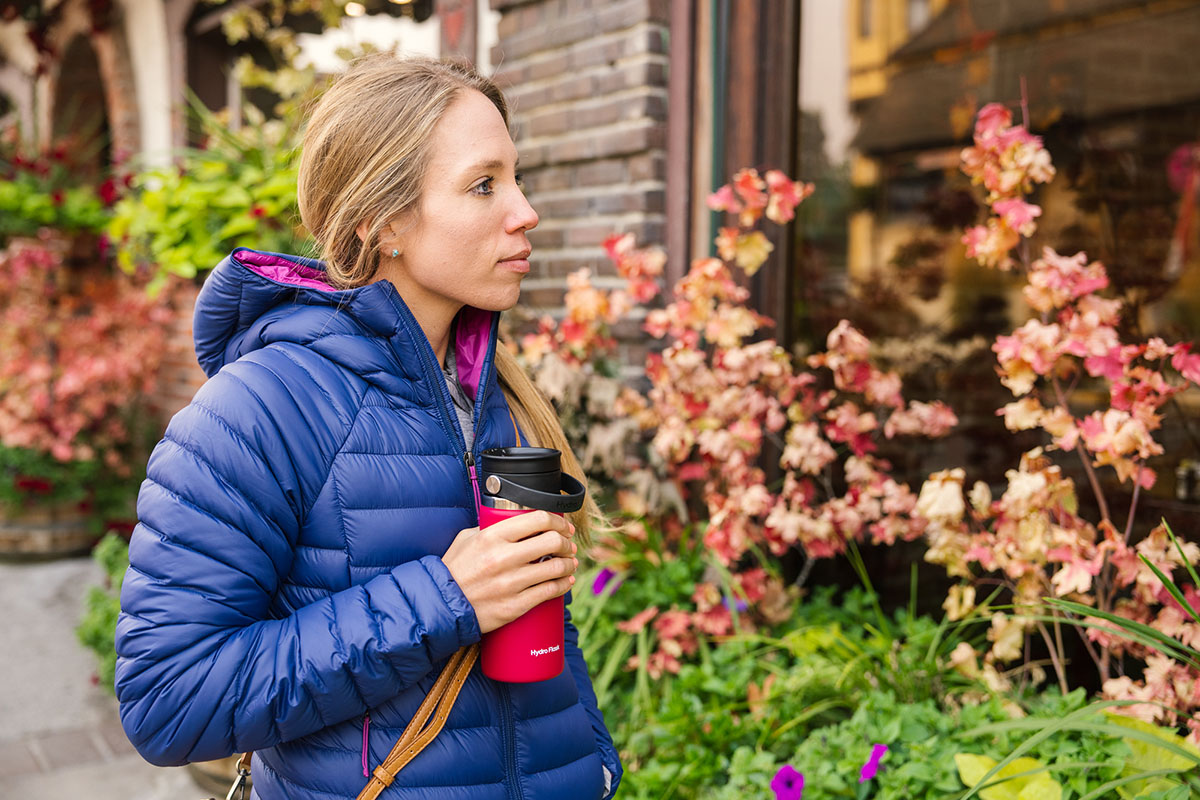
There’s a strong case to be made for synthetic insulated jackets—they hold up far better than down when wet, tend to be more breathable, and are usually easier on the wallet. That said, down remains the gold standard for pure warmth-to-weight performance. Nothing else matches its combination of loft, packability, and overall comfort. We’ve tested popular synthetics like the Arc’teryx Atom and Patagonia Micro Puff and found them to be impressively cozy and fairly lightweight, but they just can’t match the insulating power of quality down. Synthetics are great for shoulder-season outings and everyday use, but when you’re heading deep into the backcountry or facing real winter conditions, down’s superior warmth and compressibility make it the better choice. In a perfect world, you’d own both—but if you’re picking just one, down is still the undisputed champ. For a deeper comparison, check out our full breakdown of down vs. synthetic insulation.
Back to Our Top Down Jacket Picks Back to Our Down Jacket Comparison Table